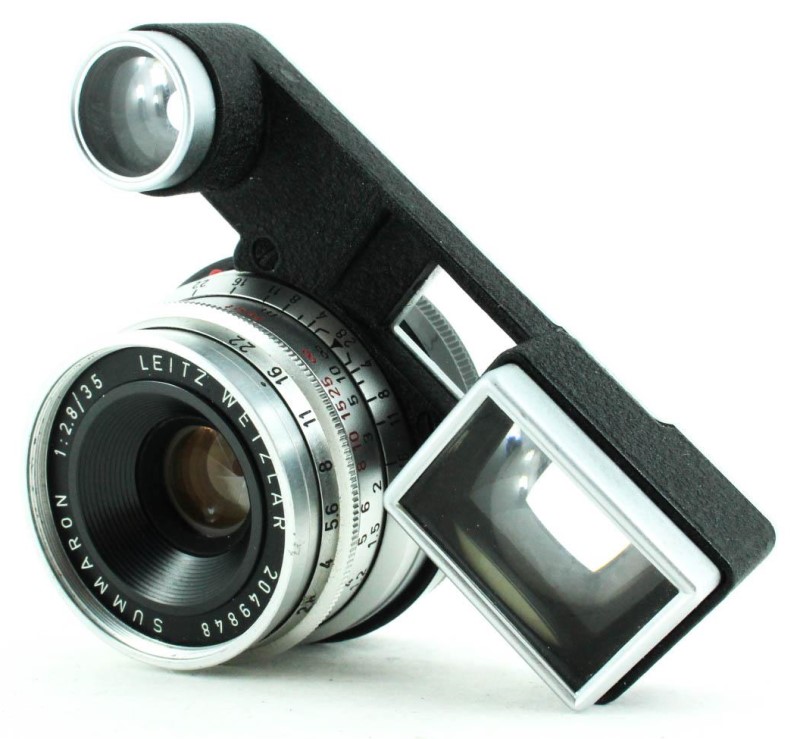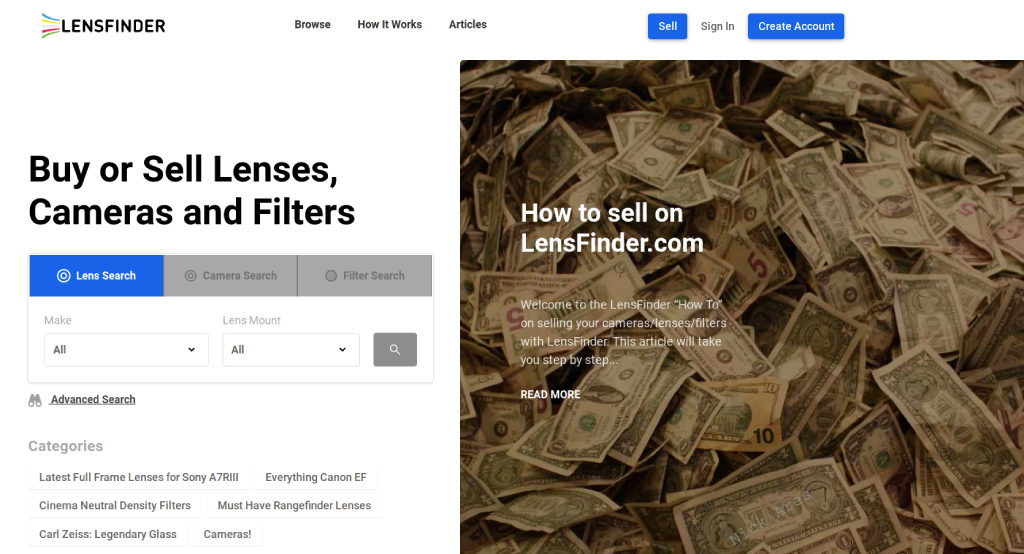4 Reasons the Leica M10 Monochrom Should Be Your Next Camera
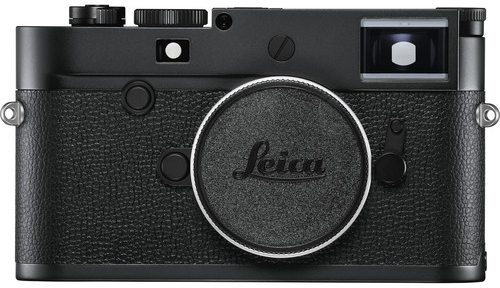
While the rise in camera technology over the past few decades has certainly been impressive, there will forever be a special place in our hearts for old-school, rangefinder-style cameras. Lucky for us, brands like Leica have recently started releasing amazing new cameras that combine the look and feel of those throwback cameras with modern features and specs.
One of those cameras is the Leica M10 Monochrom. It’s a black and white digital rangefinder mirrorless camera that came out in 2020, and it’s one of our favorite cameras we’ve ever been fortunate enough to shoot with. If you are considering purchasing one, you’re in the right place!
In this Leica M10 Monochrom review, we’ll share four reasons it should be your next camera. From its high-quality images and lens compatibility to its beautiful yet simple design, there’s so much to love about this luxury Leica camera. Additionally, thanks to innovative online platforms like MPB, buying a used digital rangefinder has never been cheaper and easier than it is today.
Who is MPB? It is a trustworthy and reliable online platform selling pre-owned photography and videography gear at unbeatable prices. Better yet, all of its cameras and lenses are carefully hand-inspected by professional product specialists with years of experience and backed by six-month warranties, allowing you to make your purchases confidently and worry-free.
We are huge fans of MPB because, over the years, we’ve saved thousands of dollars buying, selling, and trading in photography equipment on their one-of-a-kind online marketplace. If you want to upgrade your camera kit and save money, too, visit their website today. Now, without further ado, join us as we explore what makes the Leica M10 Monochrom great!
Check out the video above by Chris Chu to learn more about the Leica M10 Monochrom and to see some epic example images shot with it.
Table of Contents
- The Exquisite Build Quality of the Leica M10 Monochrom
- The High-Resolution Black & White Sensor of the Leica M10 Monochrom
- The Simplicity of the Leica M10 Monochrom
- The Lens Compatibility of the Leica M10 Monochrom
- Final Thoughts on the Leica M10 Monochrom
The Exquisite Build Quality of the Leica M10 Monochrom
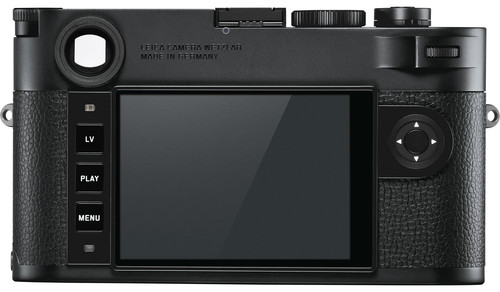
Before you even get your hands on the Leica M10 Monochrom, the first thing you will notice is its beautiful, sleek body. The design mirrors the style of classic Leica film cameras and is incredibly compact. Its environmentally-sealed body and portable size make it a perfect camera for travel and street photography.
On the back of the camera, there is a 3-inch touchscreen LCD and a large optical viewfinder. The screen has 1.04M dots, and a built-in Corning Gorilla Glass cover protects it. At the same time, the viewfinder is a 0.73x-magnification rangefinder that features an ingenious frame selector on the front of the camera for changing its field of view.
Now, here’s an in-depth look at the key features and specs of the Leica M10 Monochrom:
- Camera Type: Digital Rangefinder Mirrorless Camera
- Sensor: 40.89MP Full-Frame Monochrome CMOS Sensor
- ISO: 160 - 100,000
- Lens Mount: Leica M Mount
- Speed: 4.5 fps
- Autofocus: None
- Video: None
- Size/Weight: 139 x 80 x 38.5 mm / 660 grams
- Battery Life: 400 shots
- Stabilization: No
- Touchscreen: Yes
- Weather-Sealed: Yes
- Leica M10 Monochrom Used Price: $5,289 - $5,549
The High-Resolution Black & White Sensor of the Leica M10 Monochrom
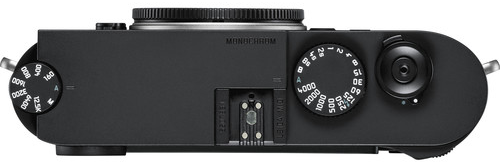
The star of the Leica M10 Monochrom is its 40.89-megapixel full-frame monochrome CMOS image sensor. It delivers stunning black-and-white photos resembling those shot with 35mm film cameras. Moreover, the high-resolution images and large pixel count are ideal for prints, wall art, magazines, etc.
Two reasons the sensor delivers images with better resolution and sharpness than most modern mirrorless cameras are that it doesn’t have an optical low-pass filter or a color filter array. The lack of these filters also improves the camera's dynamic range and reduces noise levels.
Learn More:
The Simplicity of the Leica M10 Monochrom

Leonardo da Vinci once said, “Simplicity is the ultimate sophistication.” This quote sums up the Leica M10 Monochrom because its simple yet functional design is one of the primary reasons it’s a high-end camera. The camera's top features two control dials (shutter speed & ISO), while the back only has three buttons (menu, live view, & playback).
The menu system is extremely straightforward and boasts a programmable favorites page, so you can quickly and easily select your most used settings. Another thing to note is the camera only has manual focus, giving you complete control over the outcome of your images.
Lastly, the Leica M10 Monochrom is a stills-only camera, so it doesn’t record video. If you are a hybrid content creator searching for a digital rangefinder with video capabilities, go for the Leica M-E (Typ 240) instead.
The Lens Compatibility of the Leica M10 Monochrom
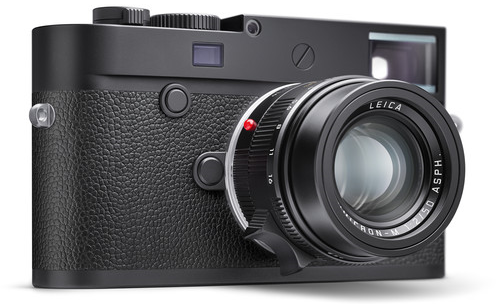
The Leica M mount may offer less selection than other lens mount systems, but what it lacks in quantity, it makes up for in quality. Leica engineers crafted every M lens with a specific purpose in mind, and each one uses only the highest quality of glass. Whether it’s a wide-angle lens, a telephoto lens, or somewhere in between, you can always expect sharp, detailed images.
Furthermore, some years back, a handful of companies, such as Voigtlander, 7Artisans, and Zeiss, started to develop more affordable third-party lenses for M mount cameras.
Here’s a quick list of a few of the best rangefinder lenses for photography to pair with the Leica M10 Monochrom.
- Leica 35mm f/2 Summicron-M ASPH
- Leica 16-18-21mm F/4 Tri-Elmar-M ASPH
- Leica 50mm f/1.4 Summilux-M ASPH
- Leica 28mm f/1.4 Summilux-M ASPH
- Leica 90mm f/1.5 Summilux-M ASPH
Final Thoughts on the Leica M10 Monochrom
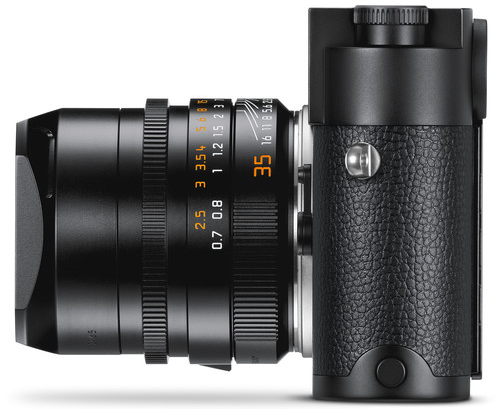
As you can see, the Leica M10 Monochrom is a unique camera designed for photographers with a specific style in mind. And while we acknowledge that it might not be for everyone, if you are looking for a black-and-white mirrorless camera replicating film, it’s one of the best cameras on the market!
Better yet, ever since the release of the Leica M11 Monochrom, the price of the M10 has dropped significantly. It originally retailed for $8,295, but currently, you can find Leica M10 Monochrom used cameras in excellent condition from MPB for under $5,500!
Still deciding if the Leica M10 Monochrom is right for you? Check out the list below to compare it with other popular digital rangefinder cameras:
Disclaimer: Our articles might have affiliate links and the occasional sponsored content, but don't sweat it – if you buy something, we get a little kickback at no extra cost to you, and we only hype products we truly believe in!
Learn More:
We Recommend
5 Reasons Why the Leica M7 is the Perfect Film Camera for 2023
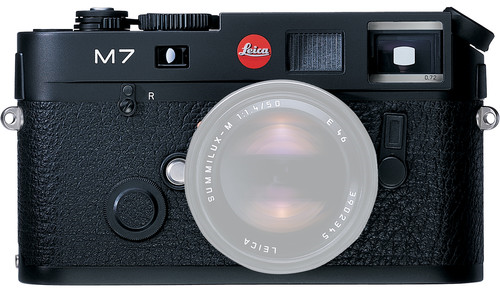
Despite the technological advancements of modern DSLR and mirrorless cameras, 35mm rangefinder cameras remain a popular choice for photographers today. And if you are old-school like me and prefer shooting on film, you will absolutely love working with the award-winning Leica M7!
In this Leica M7 review, we share everything there is to know about this amazing film camera. Here, you will learn about its design and construction, image quality, lens compatibility, price, and more!
One fantastic resource with tons of used Leica M7 cameras in stock and a place I have bought and sold countless photo and video gear throughout the years is MPB. They are a trustworthy and reliable online platform selling used photo and video kit at unbeatable prices.
Additionally, every camera at MPB is meticulously hand-inspected by knowledgeable product specialists and backed by a six-month warranty, allowing you to make your purchases confidently and worry-free. Another outstanding feature of MPB is that you can trade in and sell your old camera equipment to help offset the cost of new-to-you gear you want and need.
With that in mind, it’s time to jump in and discover five reasons why the Leica M7 is the perfect film camera for 2023!
Check out the video above by Awasos Entertainment to learn more about the extraordinary Leica M7.
Table of Contents
- The Look and Feel of the Leica M7
- The Image Quality of the Leica M7
- The Aperture-Priority Autoexposure of the Leica M7
- The Viewfinder of the Leica M7
- The Lens Selection of the Leica M7
- Final Thoughts on the Leica M7
The Look and Feel of the Leica M7
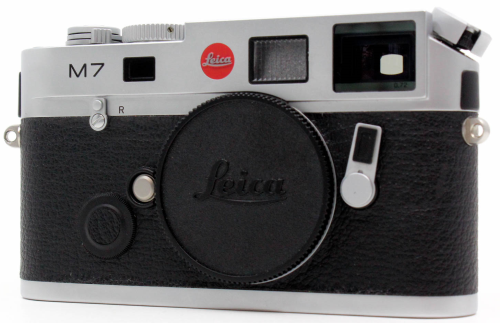
The Leica M7 is a high-end 35mm rangefinder that boasts the same simple and timeless design as classic film cameras like the Leica M3. The top dial controls the camera’s shutter speed, the rear dial controls ISO, and you adjust the aperture on the lens. Furthermore, you can easily add exposure compensation using the ring on the ISO control dial.
The M7 is extremely durable thanks to its all-metal design and weighs only 610 grams. This makes it ideal for travel and everyday use. Also, the mechanical shutter is unbelievably quiet and perfect for stealth shooting situations like street photography. Two shutter speeds are fully mechanical (1/60 and 1/125), and the camera can run battery-free at these speeds.
Here’s an in-depth look at the key features and specs of the Leica M7:
- Camera Type: 35mm Rangefinder Film Camera
- Lens Mount: Leica M Mount
- ISO: 6 - 6,400 (25 - 5000 with DX coding)
- Focus: Manual focus only
- Viewfinder: 0.72x magnification
- Exposure Metering: Through-the-lens (TTL) selective center-weighted
- Exposure Modes: Manual & Aperture-priority autoexposure
- Metering Range: EV -2 to EV +20 (when using an f/1.0 lens and ISO 100)
- Video: None
- Size/Weight: 138 x 79.5 x 38 mm / 610 grams
- Batteries: Two 3V 2L76 (DL 1/3N) lithium batteries
The Image Quality of the Leica M7
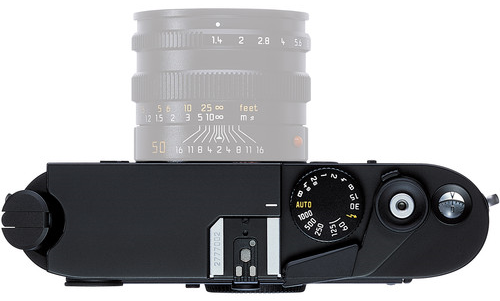
One of the main advantages of working with film is the excellent image quality, and in that regard, the Leica M7 is one of the best cameras I have ever used. Manual exposure and focus ensure the photographer has complete control over every image shot on the M7. While it takes longer to set up your shots, you will be blown away by the sharpness and detail of its photos.
The low-light performance of the M7 is also superb. The ISO goes up to 6400, and the lightning-fast Through-The-Lens (TTL) flash synchronization is a game changer. The TTL flash tops out at 1/1000/second, pairs electronically with lenses, and is great for night photography.
Learn More:
The Aperture-Priority Autoexposure of the Leica M7
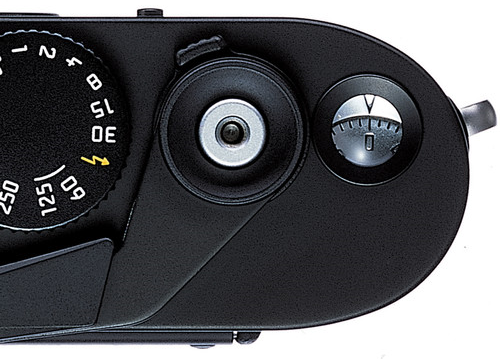
Traditionally, all three parts of the exposure triangle (shutter speed, aperture, and ISO) have to be adjusted manually on a film camera. However, the Leica M7 has an exciting new autoexposure mode typically only found on digital cameras, Aperture-Priority (AP).
AP is a semi-automatic mode where the photographer manually adjusts the aperture and ISO, and the camera selects the corresponding shutter speed to create a balanced exposure. It’s an incredibly useful tool that helps speed up workflow and productivity. Event and street photography are ideal times for playing around with AP.
The Viewfinder of the Leica M7
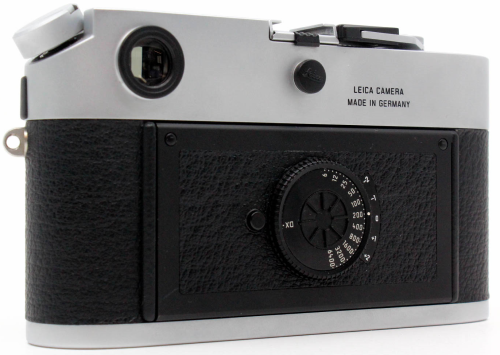
Next up, there’s the innovative viewfinder of the Leica M7. It shares the same beloved shape and crystal-clear quality as all Leica M cameras but also received some modern electronic upgrades. Information, including shutter speed, shooting mode, flash, and more, is now visible when looking through the viewfinder.
In addition, the brightness of the viewfinder’s information is adjustable. So, whether you are working in the dark of night or the middle of the day, you will always be able to know your camera settings. This nifty feature leads to consistently better photos and less money wasted on film.
The Lens Selection of the Leica M7
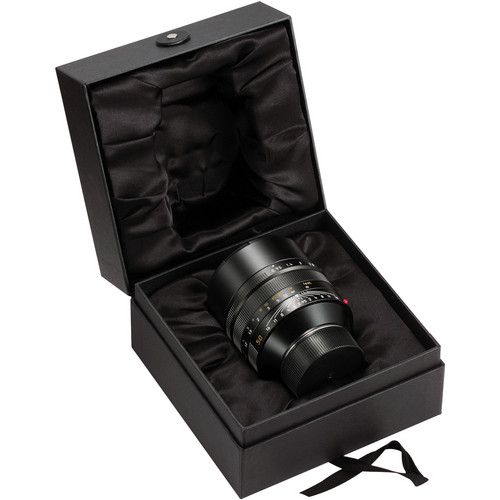
Lastly, I must mention the killer lens selection of the Leica M7. Most film cameras have only a handful of compatible lenses, but the M7 has 36 unique options. Every Leica M lens is a premium prime lens made of high-quality glass. Moreover, the focal lengths range from 18mm wide-angle lenses to 135mm telephoto lenses.
Here’s a short list of some of the best Leica M7 lenses:
- Voigtlander Nokton Classic MC 40mm f/1.4 VM - Leica M Fit
- Leica 135mm f/4 Elmar
- Leica 75mm f/1.4 Summilux-M
- Leica 35mm f/1.4 Summilux-M ASPH
- Leica 50mm f/0.95 Noctilux-M ASPH
Final Thoughts on the Leica M7
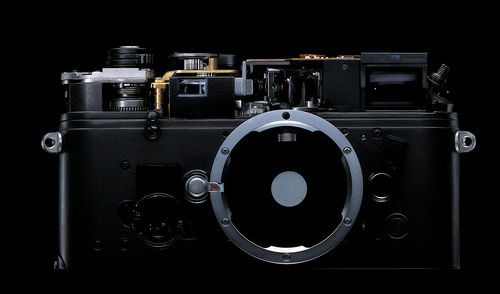
While the Leica M7 price is currently hovering around $3,500 for a used camera, that’s an absolute bargain if you are a film lover! The image quality is off-the-charts, and unlike digital cameras, which have a limited shutter count, this 35mm film camera will long outlive you and me both.
Finally, for those who want to shoot on film but aren’t 100% sold on the Leica M7, here are a few more great options:
Learn More:
We Recommend
Are Used Leica Cameras Worth It?

Used Leica cameras may be the best way most of us could ever afford these gorgeous tools, but are they worth it? Let’s find out!
Finding used Leica cameras for sale is a simple proposition, really. But finding a good source that offers warranties is another thing. We have found used Leica cameras for sale at great prices and with the peace of mind that a warranty offers at MPB. We highly recommend that if you’re in the market for a used Leica camera that you check out MPB’s selection!
Are Used Leica Cameras Worth The Price?
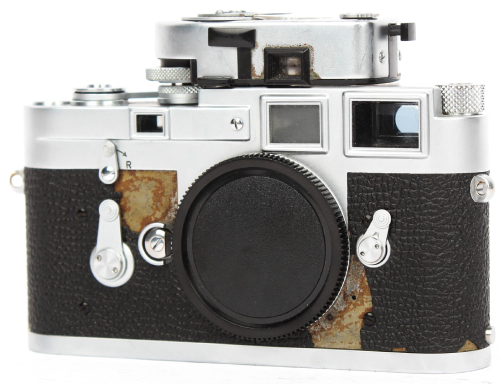
Film camera users and collectors have been buying, selling, and using used Leica cameras for scores of years. I’ve done my share of that buying, selling, and using myself with good success.
Buying used Leica cameras works to our advantage for two main reasons. One, they are extremely high-quality imaging tools, and two, they tend to hold on to an excellent resale value.
I’m not really too concerned with resale value, though it’s nice to know that I am likely to be able to recoup most of my investment in this fine equipment. My primary concern in considering used Leica cameras is taking advantage of their ultra-high quality.
Leica cameras and lenses have had a reputation for almost 100 years that is well deserved. The original E. Lietz company was already well known for optical excellence, and when the original Leica 35mm camera came on the scene, it set the standard for everything to come later in 35mm photography.
Leica Digital History
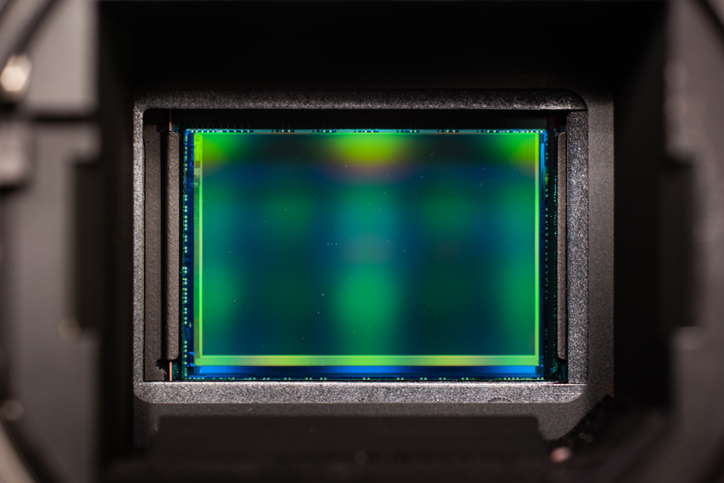
photo byOctavian Lazar via iStock
At first glance, it may seem that Leica stepped into digital imaging somewhat late, but Leica was one of the early innovators in helping drive the development of digital photography.
In the 1970s and 80s, Leica showed all sorts of digital technology at Photokina and CES and had digital cameras such as the medium format S1 of 1996 and a digital back for the SLR R8 cameras, also in 1996.
Leica digital Full Frame format interchangeable lens cameras really took off with the 18MP Leica M9 introduced in 2009, though the earlier (2006) APS-C format M8 introduced Leica digital M body rangefinder cameras to the world.
Leica digital cameras continued the pattern of superior optical quality paired with mechanical and electronic excellence that their M series rangefinders and R series SLRs set for the world of 35mm photography.
Leica cameras have been a benchmark for photographic excellence of all kinds, which has made them generally more expensive than other brands, even those brands well known for their own superior quality cameras and lenses.
So, for the question of whether used Leica digital cameras are worth the prices they command, the short answer is yes. But as with everything photography, their worth and value are going to be determined by what you need from them and how much you are personally willing to pay for any camera or lens.
Where to Buy Used Leica Cameras
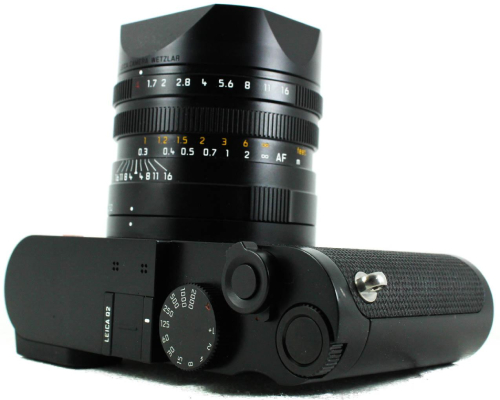
Now, you will need to know where to buy used Leica cameras. Since any of these cameras is going to be somewhat expensive, you want a place that will stand behind what they sell.
Because I’m going to assume that you’re like me, buying used Leica cameras as a user and not as a collector. One of my favorite sources for all used photographic equipment is MPB.
MPB has a rigorous process for obtaining the used cameras and lenses they offer for sale. Whether acquiring them in trade or as an outright purchase, they will only consider items that are in good working order. So, that’s the first step in what makes MPB the choice for high-end used Leica cameras.
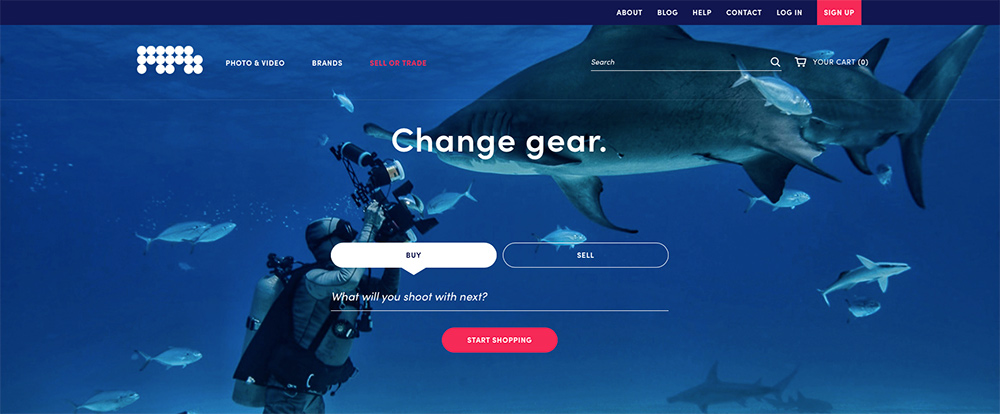
Secondly, MPB tests each and every camera and lens, and doesn’t simply rely on a visual inspection. Third, they offer a 7-day return window, so in case something does get past them, you have that failsafe. The return window is also a comfort for when you change your mind after clicking the purchasing button.
Fourth, and most important to me, MPB has a 6-month limited warranty on every camera and lens sold. All of these reasons combined with the already lower prices of buying used photography gear makes purchasing used Leica cameras a good and reasonable investment.
Learn More:
Used Leica Cameras For Sale
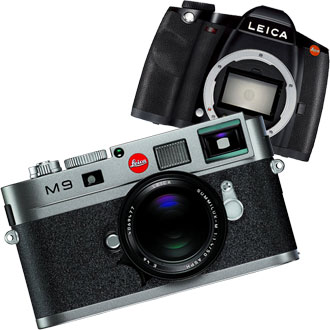
With all of the reasoning behind us now, let’s look at a few used Leica cameras for sale at MPB. Keep in mind that their inventory of used Leica cameras will vary as items come in and get sold, so some of these links may lead to placeholders on their website, but they always have something to look at in used Leica cameras.
Here are some used Leica cameras currently available on MPB:
Used Leica M9 Rangefinder
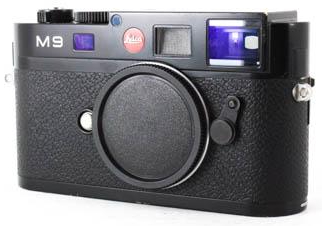
The Leica M9 is a Full Frame format rangefinder camera with an 18.5MP sensor and uses M-Mount rangefinder lenses.
Used Leica Q2 Fixed Lens
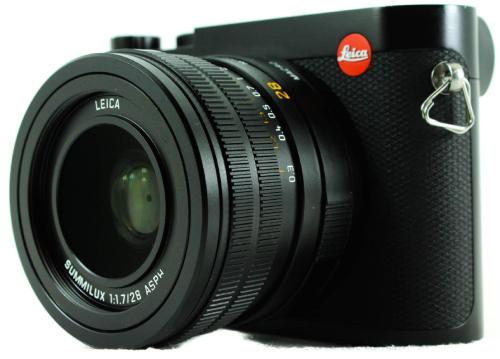
The Leica Q2 has a high resolution 47.3MP Full Frame sensor and a 28mm f/1.7 lens. It also features weather-sealing and 4K video recording.
Used Leica M (Typ 240)
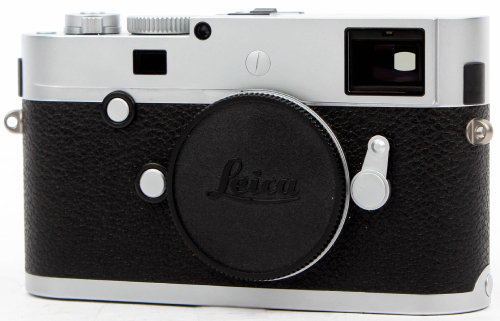
Leica M (Typ 240) has a 24MP Full Frame sensor and a classic M style rangefinder design taking M-Mount lenses.
Used Leica SL2 Mirrorless
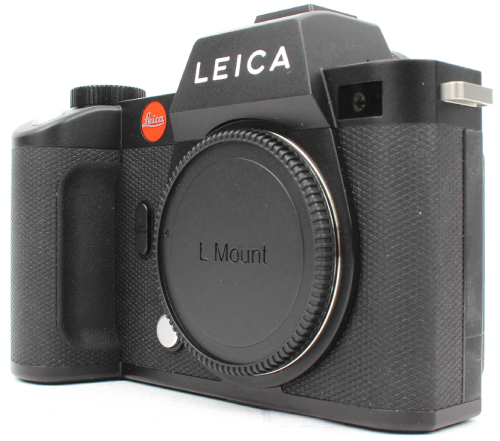
Leica’s SL2 is a mirrorless camera using L-Mount lenses and featuring an SLR-like camera body. It has a 47.3MP Full Frame format sensor and offers 5K video in addition to fantastic still imaging. It’s part of the new cooperation with Panasonic and other brands for L-Mount mirrorless cameras and lenses.
Used Leica Cameras
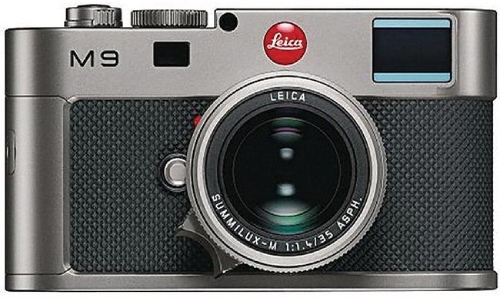
Used Leica cameras are incredible imaging machines, and finding them used at MPB is a savvy business practice that can save you money.
Likewise, you can have peace of mind when purchasing these fine used cameras and lenses from such a reputable outfit.
Who doesn’t want great gear at great prices, anyway?!
Learn More:
We Recommend
Best Mirrorless Camera for Street Photography
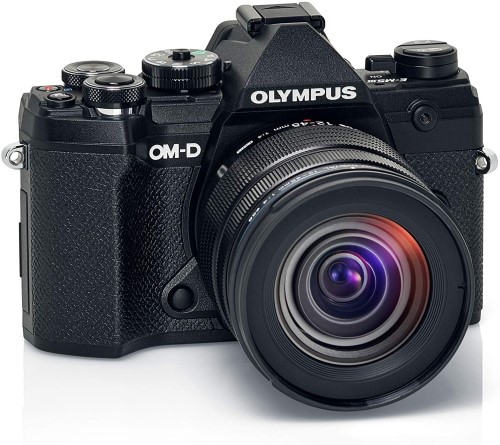
I’ll give you three different options so you can tailor the answer of the best camera for street photography to your specific situation, needs, and desires. We’ll look at the best choice for many people, a bargain option as an affordable street photography camera, and a high-end camera.
To understand just what you need as the best mirrorless camera for street photography, we’ll also review what street photography is, discuss some street photography ideas, review easy-to-master street photography techniques, and go over some inexpensive accessories for street photography.
Table of Contents
- What Is Street Photography?
- Best Mirrorless Camera for Street Photography
- Best Mirrorless Camera for Street Photography - Bargain Version
- Best Mirrorless Camera for Street Photography - High-End Version
- Inexpensive Accessories for Street Photography
What Is Street Photography?
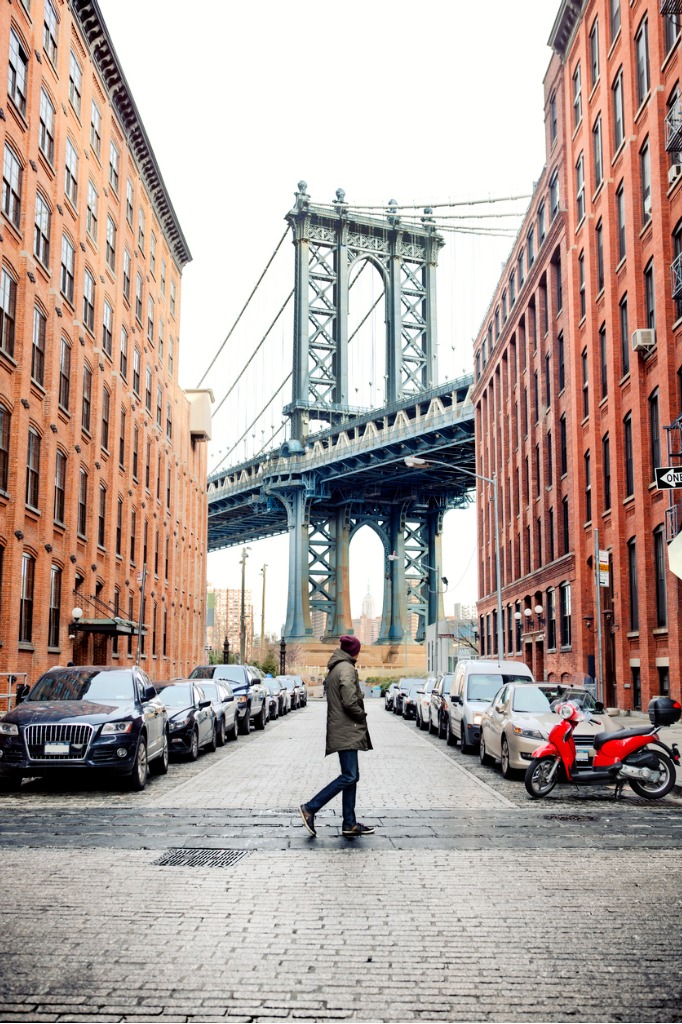
photo byOrbon Alija via iStock
My best answer to this question, especially as it relates to what may be the best mirrorless camera for street photography for you, is to point to some examples from the past.
Classic street photography artists such as Henri Cartier-Bresson, Robert Frank, and Helen Levitt, are all pioneers of this craft.
Street photography can be random, candid photography, hastily posed portraits on the fly, documentary photography, or any combination of those or somewhere in between any of these street photography ideas.
Many of the classic era of street photographers gravitated toward the smaller 35mm rangefinder cameras from Leica, Contax, Canon, and Nikon. A fast normal lens or slightly wide-angle lens was most often used. A 50mm f/1.4 or a 35mm f/2.0 was commonly the lens of choice.
A lot more could be said about street photography techniques and ideas, but I’m sure you get the picture. The current crop of mirrorless interchangeable lens cameras are closest to the style of those older cameras. So, now let's look at my three choices of the best mirrorless camera for street photography.
Best Mirrorless Camera for Street Photography
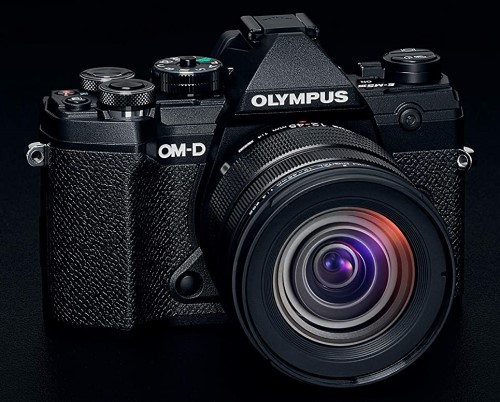
I will start with the MFT format Olympus OM-D E-M5 Mk III with 12-45mm Pro lens, which retails for a little under $1900.00. It has multiple features that make it a fantastic candidate as being the best mirrorless camera for street photography.
This camera has a 20MP MFT format sensor which provides outstanding image quality within a very compact camera body. MFT is one of what I consider the three formats best suited for serious photography. The other two are APS-C and Full Frame formats.
There is an in-body image stabilization function that gives up to 5 ½ stops of ability to handhold the camera in a wide range of exposure conditions. That helps make up for the lens being of modest maximum aperture, f/4.0, for allowing good image captures in street photography.
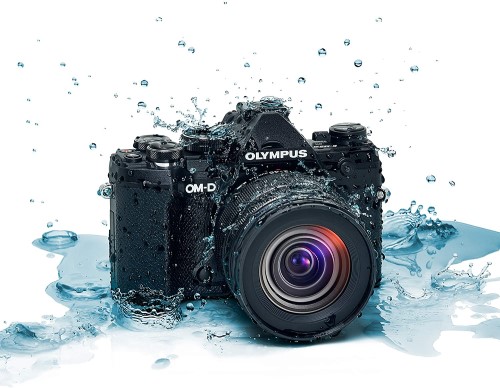
So, the photos you can get with this camera are going to be high quality, sharp, and full of exposure information when used in RAW file capture mode. That is a very desirable feature for any camera boasting to be the best mirrorless camera for street photography.
The camera body and this pro lens are weather sealed for extra protection from the elements, another feature that benefits our choice of best mirrorless camera for street photography.
This particular lens is well suited for a lot of street photography ideas since it has a range from wide-angle, through normal, up to a little bit of telephoto. There are many lenses from various manufacturers in the MFT mount, so this camera can do a lot for you besides being the best mirrorless camera for street photography.
It isn’t the perfect camera for everything - it doesn’t have a built-in flash or 4K video. But I find it hard to beat as my top choice for best mirrorless camera for street photography. Now let’s see what other options we have.
Learn More:
- 5 Photographer Tools for Beginners
- Perfect Accessories for Micro Four-Thirds Cameras
- Outdoor Photography Tips for Summer
Best Mirrorless Camera for Street Photography - Bargain Version
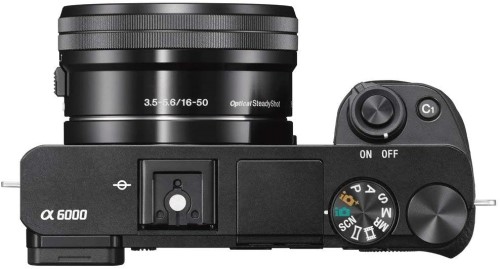
Sony Alpha a6000 with 16-50mm power zoom lens is my choice for the bargain version of the best mirrorless camera for street photography. It is an APS-C format camera with a 24.2MP sensor and retails for under $750.00.
Features of this camera which make it a bargain choice for best affordable street photography camera are its super-fast autofocusing, a huge array of lenses available, Full HD video, and a super-vivid tilting viewscreen for a lot of street photography ideas and street photography techniques.
Best Mirrorless Camera for Street Photography - High-End Version
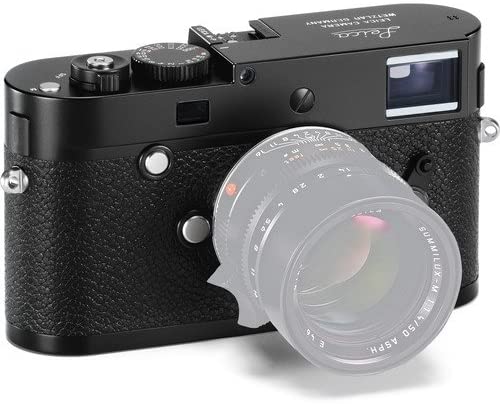
Let’s go back to the camera brand which epitomized the classic era of street photography, the Leica rangefinder. Perhaps the closest to the spirit of the Leica III-G screw mount camera or Leica M3 camera with M-mount bayonet lenses is the 24MP Leica Typ 240 Full Frame format mirrorless rangefinder camera.
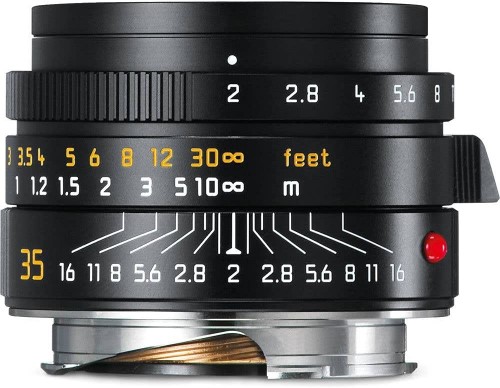
If the budget works for you, a Leica rangefinder camera with a relatively fast medium wide-angle lens such as the Leica Summicron-M 35mm f/2.0 is probably the best mirrorless camera for street photography that I could consider recommending.
The quality of all Leica products is nothing short of amazing, but you will pay for that privilege. This particular combo, for instance, will set you back around $9,300.00 or so to own this high-end version of the best mirrorless camera for street photography.
Inexpensive Accessories for Street Photography
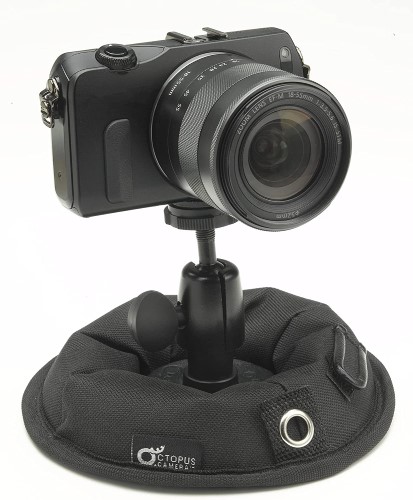
After the camera and lens, a few choice accessories will round out our gear for the best mirrorless camera for street photography. Three accessories I will focus attention on are a portable camera mount, a comfortable strap, and a versatile bag.
For street photography, flash is seldom used, but we may need a little more capability for low light shooting than is offered by our lens aperture and the camera image stabilization functions. But, using a tripod isn’t likely to be our best solution.
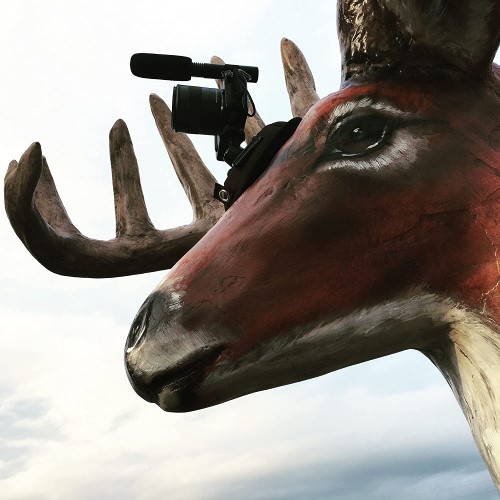
The stability and portability of the OctoPad Camera Mount make it virtually indispensable for our street photography techniques and ideas.
OctoPad is a lightweight, compact, inexpensive, and ultra-steady camera mount that pairs perfectly with our best mirrorless camera for street photography choice. It has a weighted disk base with a non-slip pad underneath and a ball head on top.
You can carry this camera mount with you for all types of street photography techniques and it even can be placed on surfaces with an incline of up to 45 degrees. It really is about the best accessory for your new best mirrorless camera for street photography.
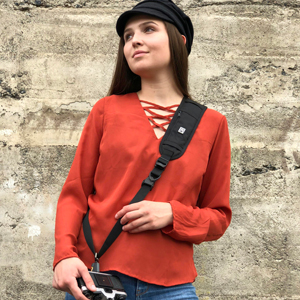
Other useful accessories to combine with the best mirrorless camera for street photography are a sling strap such as the BlackRapid RS-4 and a heavy-duty bag such as the Hex Ranger for camera and gear protection.
That’s my take on the best mirrorless camera for street photography and some very useful accessories. I’m curious what your choices would be?
Learn More:
- Versatile Camera Gear You Need In Your Bag
- How To Pack Light for a Photography Trip
- 4 Simple Ways to Create Emotion in Photos
We Recommend
Best Portrait Lens: What Focal Length Should You Use?

Photo by adamkaz via iStock
What focal length, f-stop, and lens type makes the best portrait lens is a subject photographers love to talk about. If you saw some of us “discussing” portrait lens choices, you might think we’re arguing! We’re not arguing; we’re just passionate because we’re artists.
As a disclaimer, let me go on record by saying there is not one single perfect portrait lens that will satisfy every photographer’s thoughts on the matter. Hey, my own portrait lens choice might change from subject to subject or what style I’m shooting!
Still, some general ideas or principles governing portrait lens basics are good to know. I’ll talk about those and list some great portrait lens candidates I found at my go-to online platform for gear, MPB.
I like to shop for used cameras and lenses at MPB because pre-owned gear saves me money. MPB allows me to buy, sell, and trade gear, and they have customer-friendly policies that make buying, selling, and trading photography equipment safe and easy. What’s not to like?!
Now, let’s have a chat about the best portrait lens options for varying camera systems…
Table of Contents:
- What Makes a Good Portrait Lens?
- Sony Portrait Lens - Zeiss Batis 85mm f/1.8
- Leica Portrait Lens - 90mm f/2.8 Elmarit M
- Sigma Art Portrait Lens - 105mm f/2.8 DG Macro<
- Canon Portrait Lens - Canon RF 70-200 f/2.8 L IS USM
- Nikon Portrait Lens - Nikkor Z 50mm f/1.8 S
- APS-C Fuji Portrait Lens - Fujinon XF 56mm f/1.2 R WR
- Medium Format Portrait Lens - Fujifilm GF 110mm f2.0 R LM WR
What Makes a Good Portrait Lens?
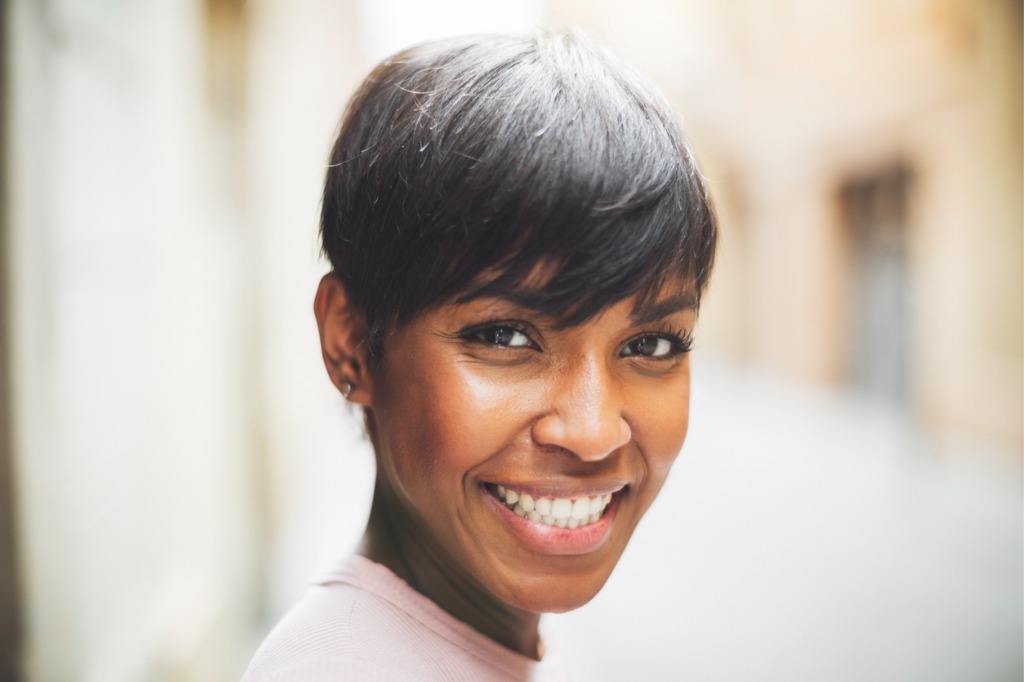
Photo by piola666 via iStock
The qualities that make a lens a good portrait lens are somewhat variable; there is no one set of criteria for the best portrait lens.
Some things are generally considered good for a portrait lens, though. For example, a focal length longer than what’s considered normal for the format used but not too much into the telephoto range is desirable. An f-stop or lens aperture fast enough for selective focus is also desired.
We tend to like a slightly telephoto portrait lens focal length because we’re capturing images of people. Too short of a focal length, especially when used up close, causes unflattering elongation of facial features due to apparent perspective. Some of that depends on our framing - a 3/4s length portrait can be captured with a normal lens, but the typical head and shoulders portrait usually looks better with a short telephoto portrait lens.
Here is a good comparison on the Mango Street YouTube page of various portrait lens focal length options:
Most of the lenses in my list of portrait lens favorites skew towards single focal length short telephoto prime lenses with a fairly fast maximum aperture, though I also consider a normal lens a good portrait lens for some styles of portraits.
Many pro-style telephoto zooms have fast apertures, too, so they’re also in the running. Let's take a look at some lenses I found at the MPB. If any aren’t in stock at the time of your reading this, simply bookmark the placeholder page and look again later, as used inventory is constantly changing.
Sony Portrait Lens - Zeiss Batis 85mm f/1.8
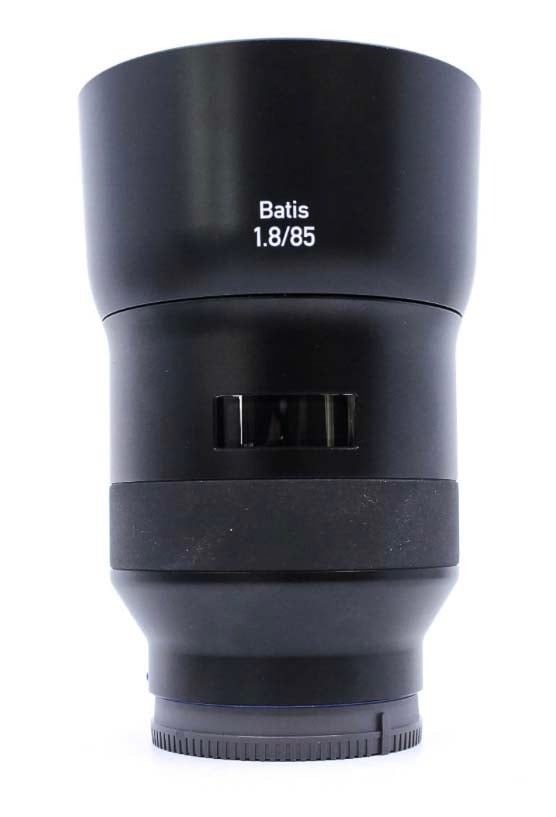
The Sony Portrait Lens - Zeiss Batis 85mm f/1.8 is a very fast, extremely sharp, short telephoto focal length from one of the premier lens makers in the history of photography, Zeiss. This version fits on Sony Full Frame format mirrorless cameras like the 61MP Sony Alpha A7R V camera.
A little heavy at just under a pound, it balances nicely on Sony cameras. Focusing to about 2 ½ feet, this lens has three low dispersion elements and produces beautiful bokeh in selective focus portraits.
Leica Portrait Lens - 90mm f/2.8 Elmarit M
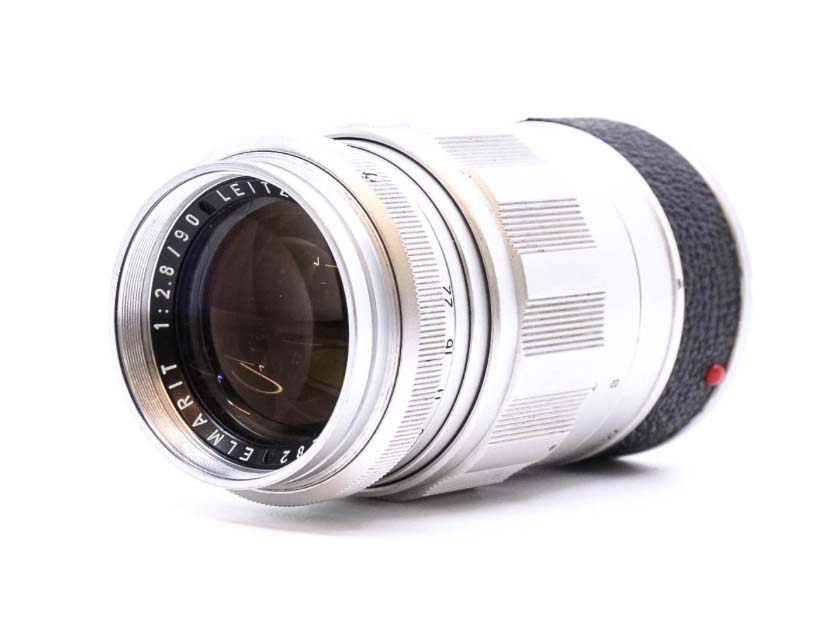
The Leica Portrait Lens - 90mm f/2.8 Elmarit M fits M-Series Leica rangefinder cameras, including the fantastic Full Frame format 24MP Leica M10 camera. Very compact, this is one of the sharpest examples of a portrait lens you can find.
Sigma Art Portrait Lens - 105mm f/2.8 DG Macro
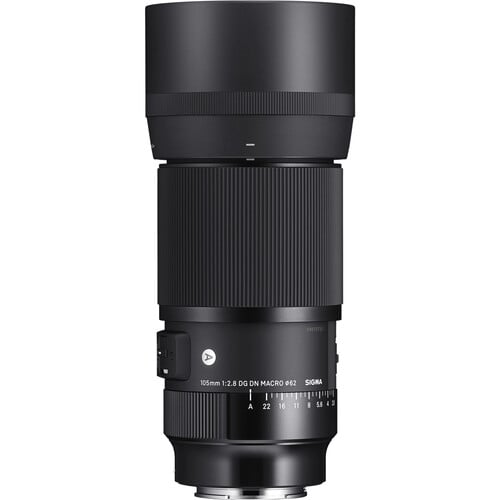
The Sigma Art Portrait Lens - 105mm f/2.8 DG Macro is a great dual-purpose lens. Available in various mirrorless lens mounts for Full Frame format, this lens works as a portrait lens and has 1:1 close focusing capability for macro work.
Canon Portrait Lens - Canon RF 70-200 f/2.8 L IS USM
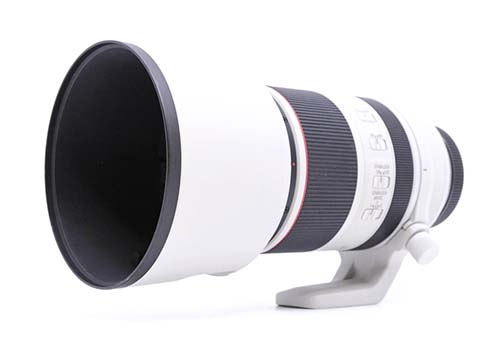
The Canon Portrait Lens - Canon RF 70-200 f/2.8 L IS USM is a high-quality professional-level fast aperture telephoto zoom lens for the awesome Canon R-Series mirrorless Full Frame format cameras. Large and somewhat heavy, it’s a fine example of a multipurpose lens that can also be used as a portrait lens.
Nikon Portrait Lens - Nikkor Z 50mm f/1.8 S
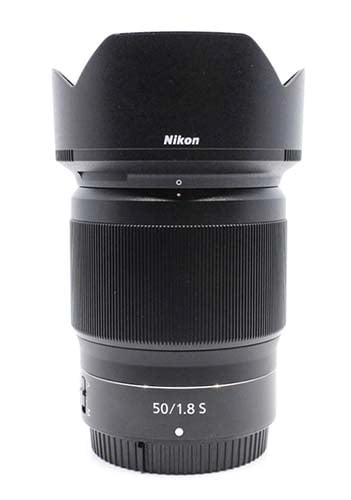
The Nikon Portrait Lens - Nikkor Z 50mm f/1.8 S is a good candidate for a normal lens used as a portrait lens. It fits the excellent Nikon Z-Series of Full Frame mirrorless cameras such as the top tier Nikon Z9 45.7MP camera with 8K video. Much smaller and lighter than the f/1.2 version, this lens is plenty fast for lots of uses and is very compact.
APS-C Fuji Portrait Lens - Fujinon XF 56mm f/1.2 R WR
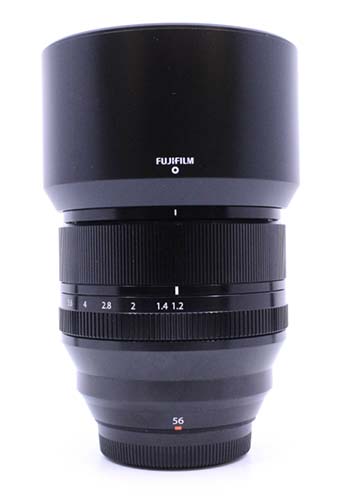
The APS-C Fuji Portrait Lens - Fujinon XF 56mm f/1.2 R WR is made for Fujinon XT mount APS-C mirrorless cameras. With a 1.5X crop factor, this lens corresponds to 84mm in Full Frame format and has beautiful bokeh with the ultra-fast f/1.2 lens aperture and 11-blade diaphragm.
Medium Format Portrait Lens - Fujifilm GF 110mm f2.0 R LM WR
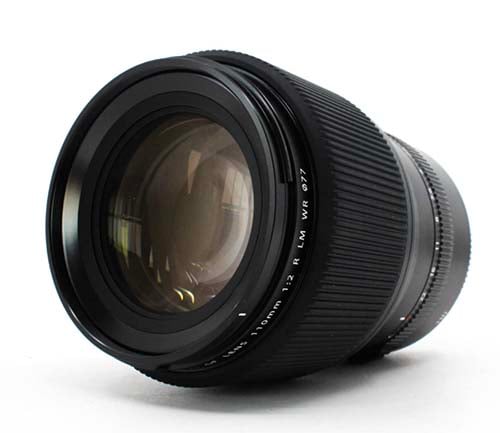
The Medium Format Portrait Lens - Fujifilm GF 110mm f2.0 R LM WR is a portrait lens for Fujifilm G-Mount medium format cameras like the very affordable Fujifilm GFX 50S. It corresponds to 87mm in Full Frame format. It balances perfectly with the GFX 50S and has a close focus, making it a great contender for the best portrait lens in medium format.
With that, you have numerous examples of the best portrait lenses for varying formats and camera brands. Again, there is no single lens that’s the “best” for everyone, so consider the type of camera you have, the type of portraiture you most often do, and your budget, then set about finding an optimal lens that meets your criteria.
As I noted earlier, MPB is my go-to platform for finding used gear. If you want to save money while having a tremendous selection of lenses to choose from, MPB is the first place you should look!
Learn More:
We Recommend
Four Things to Know About the Leica M Typ 262
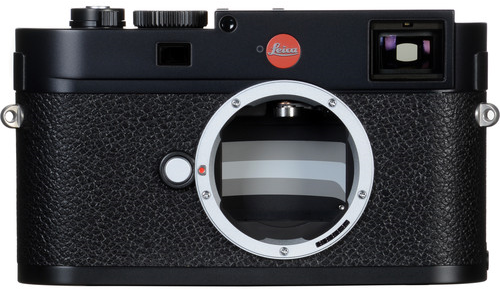
While it doesn’t have the name recognition as other camera brands like Canon, Nikon, or Sony, Leica is famous throughout the photography industry for its luxury, high-end cameras such as the Leica M Typ 262.
In this Leica M Typ 262 review, we’ll share four essential things to know about the camera before buying it. They include its beautiful design, excellent lens compatibility, lack of autofocus, and status as a stills-only digital rangefinder camera. Additionally, thanks to innovative websites like MPB, buying a used rangefinder camera has never been cheaper and easier.
Who is MPB? It is a trustworthy and reliable online platform selling pre-owned photography and videography gear at unbeatable prices. Better yet, all of its cameras and lenses are hand-inspected by professional product specialists with years of experience and backed by six-month warranties, allowing you to make your purchases confidently and worry-free.
We love MPB because, over the years, we have saved thousands of dollars buying, selling, and trading in photography equipment on their one-of-a-kind online marketplace. You can start saving, too, by visiting their website today. With that in mind, it’s time to determine whether or not the Leica M Typ 262 fits you and your photography needs!
Check out the video above by Samuel Streetlife for a hands-on review of shooting with the Leica M Typ 262.
Table of Contents
- The High-Quality, Classic Design of the Leica M Typ 262
- The Leica M Typ 262 is a Stills-Only Digital Camera
- The Leica M Typ 262 Doesn’t Have Autofocus
- There are Tons of Amazing Lenses Compatible With the Leica M Typ 262
- Final Thoughts on the Leica M Typ 262
The High-Quality, Classic Design of the Leica M Typ 262
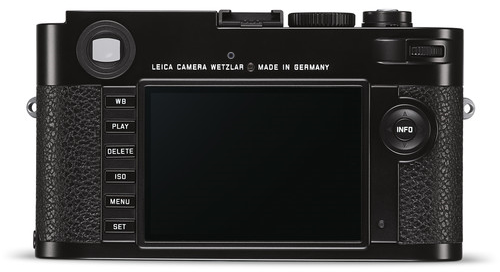
The Leica M Typ 262 is a gorgeous camera with a retro, throwback design. Despite its old-school look, it’s a relatively new camera (it came out in 2015) with many advanced photography features. For quality assurance, every Leica camera is made and designed in Germany.
The camera’s simple, straightforward design is a breath of fresh air compared to modern cameras packed with buttons and dials. The camera's top only has the power switch and a shutter speed control dial. On the back, you will find a second exposure dial, a 3-inch LCD, a large optical viewfinder, and seven clearly labeled buttons.
Leica included an aluminum alloy top plate and a scratch-resistant Gorilla Glass screen cover on the M Typ 262 for extra protection. Furthermore, its fully weather-sealed body makes it more durable by keeping it safe from dust, moisture, etc.
Now, here’s an in-depth look at the Leica M Typ 262 specs and key features:
- Camera Type: Digital Rangefinder Camera
- Sensor: 24.0MP Full-Frame CMOS Sensor
- ISO: 200 - 6,400 (Expandable to 100 - 6,400)
- Lens Mount: Leica M Mount
- Speed: 3.0 fps
- Focus: Manual Focus Only
- Video: None
- Size/Weight: 139 x 80 x 42 mm / 680 grams
- Battery Life: 500 shots
- Stabilization: No
- Touchscreen: No
- Weather-Sealed: Yes
- Leica M Typ 262 Used Price: $3,349 - $3,629
The Leica M Typ 262 is a Stills-Only Digital Camera
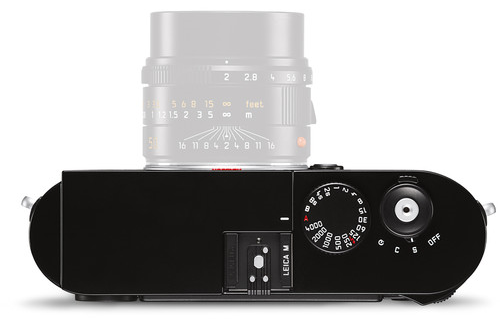
If there’s only one piece of information you take away from this article, it should be that the Leica M Typ 262 is a stills-only camera. Whereas most new DSLR and mirrorless cameras are hybrid cameras with both photo and video capabilities, the Leica M Typ 262 only shoots photos.
While some might see this as a negative, it’s quite the opposite. Since the engineers behind hybrid cameras must find the correct balance between photo and video specs, both ultimately suffer. Not this camera, though! 100% of its specs and features were designed to shoot the sharpest, most detailed photos possible.
So, if you only practice photography, the Leica M Typ 262 is a fantastic camera. Alternatively, if you need a camera for photography and videography, you will be better off with a flagship camera like the Sony a1.
Learn More:
The Leica M Typ 262 Doesn’t Have Autofocus
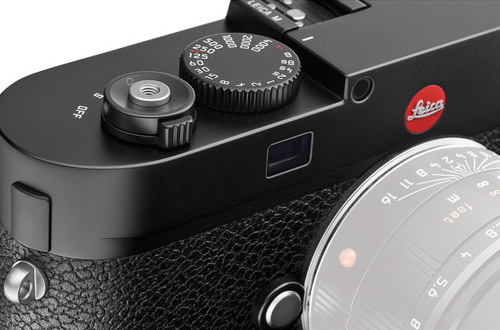
Another important thing to know about the Leica M Typ 262 is that it only has manual focus, which will not change regardless of the lens you use. While beginners may struggle without autofocus, it shouldn’t be an issue for experienced photographers, who typically prefer manual focusing.
Once you get the hang of it, manual focus gives you more control as a photographer and is the best way to guarantee sharp images. That said, manual focus is not ideal for all shooting situations. Examples include types of photography with fast-moving subjects, like sports and wildlife photography. On the other hand, manual focus is great for landscapes and architecture.
There are Tons of Amazing Lenses Compatible With the Leica M Typ 262
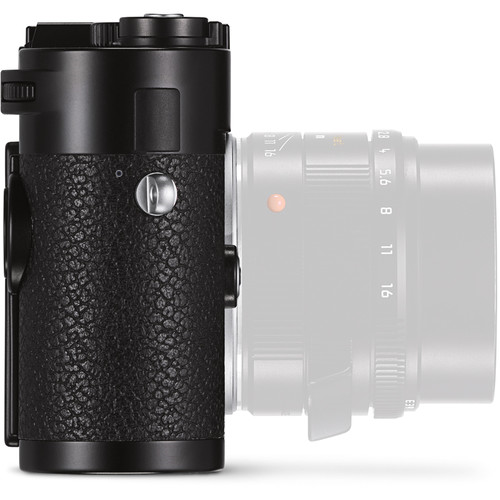
Lastly, the Leica M Typ 262 is compatible with many highly rated rangefinder lenses. Most native Leica lenses are prime lenses constructed using premium glass and metal. Nevertheless, if you absolutely need a zoom lens, you can find them. Plenty of more affordable third-party lenses also exist.
Here’s a quick list of some of the best Leica M mount lenses for photography to pair with the Leica M Typ 262:
- Leica 50mm f/0.95 Noctilux-M ASPH [11602]
- Leica 90mm f/1.5 Summilux-M ASPH [11678]
- Leica 35mm f/1.4 Summilux-M ASPH [11663]
- Leica 16-18-21mm F/4 Tri-Elmar-M ASPH [11642]
- Leica 28mm f/2.8 Elmarit-M ASPH (11606)
Final Thoughts on the Leica M Typ 262

The Leica M Typ 262 is an extremely unique camera, and we understand that this limits its potential buyers. Many people want modern features like autofocus and video recording, which the Leica M Typ 262 doesn’t offer. However, it's a truly remarkable camera for photographers willing to forgo those features!
Finally, purchasing a new camera is a big decision. Because of that, you may want to compare the Leica M Typ 262 with similar models before buying it. If that’s the case, check out the list below of other popular Leica rangefinder cameras currently available at MPB:
Disclaimer: A quick heads-up: If you snag something through our affiliate links or check out our sponsored content, we might earn a commission at no extra cost to you. But fear not, we're all about recommending stuff we're truly stoked about!
Learn More:
- 5 Reasons Why the Leica M7 is the Perfect Film Camera for 2023
- Leica M11 Review: A Superb Digital Rangefinder Camera
We Recommend
Is a Leica M10 Worth the Money?
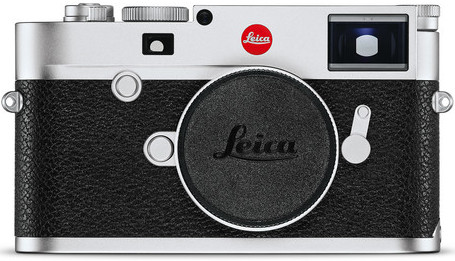
Leica rangefinder cameras have been sought after for decades by discerning photographers, whether professional or amateur.
The Leica M10 is one of the latest incarnations of the M-series Leica rangefinder camera line and is a wonderful example of Leica’s craftsmanship and attention to detail.
What makes the Leica M10 so special? Why are Leica cameras and lenses so expensive? Is the Leica M10 worth the money you’ll have to shell out to own and use one? These are common questions you might be considering as you think about purchasing a Leica.
I’ll answer these questions and also discuss how much money you could save by purchasing your Leica M10 used, including where to buy a used Leica to use for photography (hint…it’s MPB!).
Table of Contents:
- Why Leica Rangefinder Cameras are So Desirable
- Leica M10 Specs
- Who Would Use a Leica M10?
- Where to Buy a Used Leica M10
- Leica M10 Lenses and Accessories
- Final Thoughts on Leica M10
Why Leica Rangefinder Cameras are So Desirable
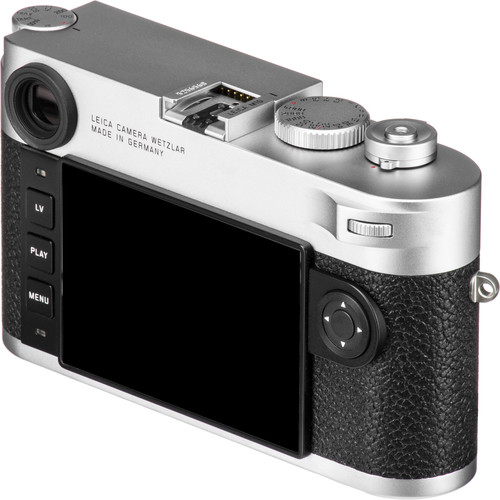
Before we get into the specifics of the Leica M10, you might enjoy a brief history of Leica cameras, and how they got to the revered status they have today.
Leica cameras have been around for some 100 years, and Leitz optics already had a reputation for superb performance and high quality prior to the first Leica camera being built. The original Leica 35mm cameras were one of the main driving forces behind the 35mm format becoming such a popular film format for professionals and photography enthusiasts.
Part of what set Leica apart from other brands in earlier times was old-world German craftsmanship. For many decades, photographers that wanted extremely well-made cameras and the sharpest lenses preferred German companies. Leica was one of the top companies, along with Zeiss, making cameras and lenses that were so precision made, so sharp, that they became an unofficial standard.

"Leica M5" by *Photography by Mike* is licensed under CC BY-SA 2.0.
When Leica introduced the M3 rangefinder camera with the new M bayonet mount that incorporated precision cams for rangefinder focusing, they pretty much jumped to the absolute top of the pile for 35mm interchangeable lens cameras. It really was that special of a camera, almost 70 years ago now.
This M Series of Leica rangefinder cameras continued to be made, developed, and improved upon all through the modern history of 35mm photography. Other Leica cameras, such as those in their SLR lineup, introduced partnerships with high-end makers of electronics and photography gear from Japan with excellent results.
Leica engineers were at the forefront of other advances such as autofocus and better exposure systems. When digital photography made the world sit up and take notice, Leica was involved there, too.
There is so much more that could be said, but I’ll end this brief tour by saying that Leica rangefinder cameras are still seen by many as the pinnacle of 35mm format excellence. The Leica M10 is a continuation of that legacy.
Leica M10 Specs
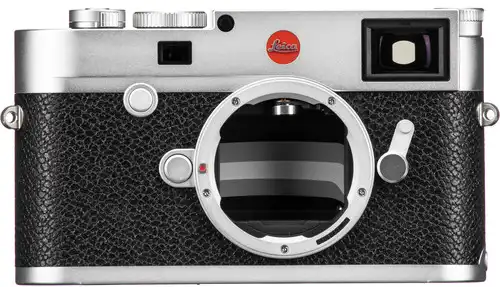
If you took away all the legacy of excellence that contributes to the Leica M10’s desirability, you would still have an awesome camera, simply based on the specs and quality of build. Here are the basic comparison points for the Leica M10 camera:
- 24MP Full Frame sensor
- ISO 100-50,000
- 1/4000th to 8 seconds shutter speeds
- M style bayonet mount lenses
- Coupled Rangefinder focusing
- Optical combined rangefinder/viewfinder
- 100% viewfinder coverage
- 3” fixed LCD rear view screen with Liveview
- Auto and manual exposure modes
- Spot, center-weighted, and multi-pattern exposure metering
- Dedicated flash automation with OTF metering
- 2GB image processor buffer
- 5 fps sequencing
- Environmental sealing
- Wi-Fi capability
- Fully professional build and ruggedness
All of this is put into a rugged and durable body that feels much like a film-era M4 or M6 Leica rangefinder camera. It’s a combination of old-world charm, back-to-basics handling, and state-of-the-art digital imaging performance.
Learn More:
Who Would Use a Leica M10?
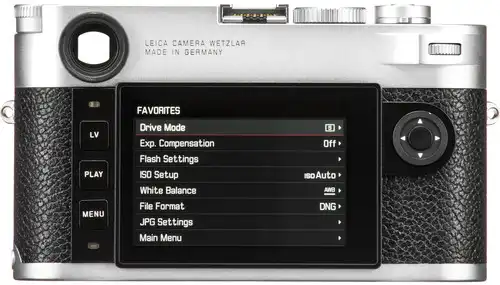
Photographers that need ultra-high-quality imaging tools that are rough and rugged, as well as being amongst the most elegant cameras made, will love this camera. If you have a large discretionary budget for your photography equipment, whether as a pro or a discerning enthusiast, you’ll love this camera.
Interestingly, though quite expensive, Leica M10 and accompanying lenses are competitively priced for cameras and optics with similar characteristics, image excellence, and build quality. Just think of the Leica M10 as a top-of-the-line professional-caliber camera system. It’s priced accordingly.
Where to Buy a Used Leica M10
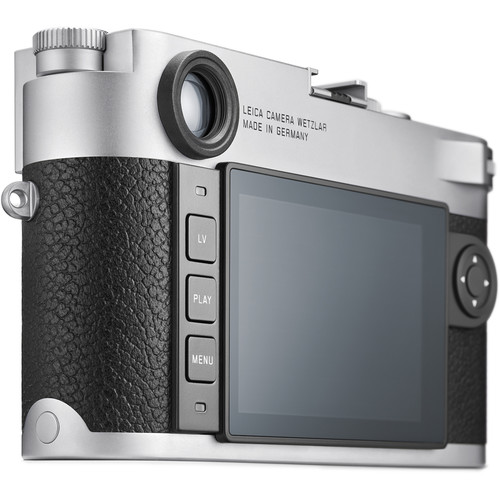
One of my favorite things to do is get the best value for my budget when purchasing cameras and lenses. So, I often look for used gear when considering a camera or lens.
I want some reassurance, though, and so should you when shopping for top-end camera gear. The online platform MPB is a great place to get pre-owned cameras and lenses for several reasons.
They carefully inspect all items before they offer them for sale. The descriptions of conditions are extremely accurate, too. They also offer a 7-day return window and a 6-month warranty of most items. And the place is run by avid photographers, so you know what you're getting, and you have buyer protections.
Pricing of used photography equipment is extremely favorable as well. Outside of collectables or limited production items, used gear is always less costly than new. Here is what MPB has for Leica M10 cameras available for sale.
Leica M10 Lenses and Accessories
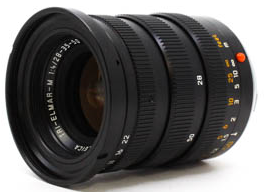
MPB is also the place to go for Leica rangefinder camera lenses, for all of the same reasons as for buying the Leica M10 camera body itself. Some lenses you might consider include:
- Leica 50mm f/2 Summicron-M
- Voigtlander Ultron 28mm f/2 VM
- Voigtlander Heliar Classic 75mm f/1.8 VM
- Leica 28-35-50mm f/4 Tri-Elmar-M ASPH
Final Thoughts on Leica M10
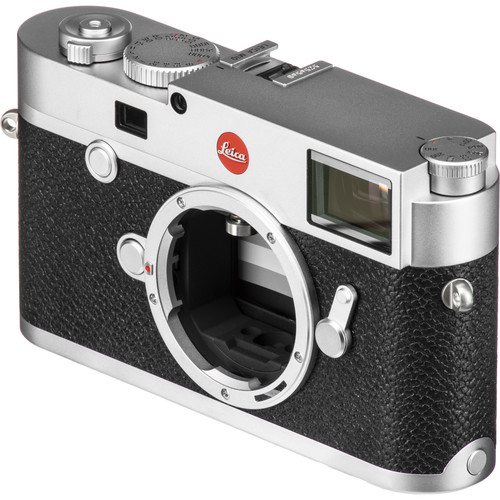
There seems to be an aura surrounding the name Leica for some people, which is part of the mystique. But what is really special about Leica and Leitz isn’t any mystique, but the high quality of the gear and the excellence of the images produced.
The Leica M10 comes with a very well-deserved legacy and reputation. As for the question of is the Leica M10 worth the money? For photographers desiring one of the best Full Frame format cameras and with the budget availability, the answer is a resounding “Yes!”
Learn More:
- Are Used Leica Cameras Worth It?
- Save Money with These Used Leica Lenses
- How to Save Money When Buying Photography Gear
We Recommend
Leica M10 Monochrom Review

It is a very rare occasion for me to get to discuss a camera as exciting as the Leica M10 Monochrom...
I’d like to think that Leica really just did everything they did in this camera to wow photographers like me who’ve been in the business for decades. I’d also like to imagine that they didn’t need to up the price on the Leica M10 Monochrom as much as they did to do it.
However, if you get all of the features in this camera, then you can also expect to pay thousands and thousands of dollars for it.
If you know much about the Leica M10 Monochrom, then it is likely one of these three facts: the camera uses a manual focus rangefinder design that Leica used to use decades ago, the camera only shoots in black and white, and the camera is one of the most expensive Leica has ever released.
If that’s got you intrigued, then let’s talk about all of the other Leica M10 Monochrom features.
Leica M10 Monochrom Specs

The Leica M10 Monochrom specs, like everything else about this camera, are phenomenal.
The camera comes with a 40MP full frame CMOS sensor. Importantly, since the Leica M10 Monochrom only shoots in black and white, this sensor doesn’t have color filters.
The camera comes with the Maestro image processor, a 3” fixed touchscreen with 1.03m-dots, and an impressive ISO range of 100-100,000. If you have trouble shooting in low light with this camera, then I can assure you the camera isn’t the problem.
Other Leica M10 Monochrom Specs Include:
- 40MP full frame CMOS sensor
- Maestro image processor
- ISO range of 100-100,000
- No AF system
- 4.5fps burst mode
- 3” touchscreen with 1.03m-dots
- Built-in Wi-Fi
- Dust and splash resistant
- Add-on EVF is available for a price
- 1.45 lbs
Leica M10 Monochrom Body & Design

As I mentioned, the Leica M10 Monochrom body weighs 1.45lbs. It measures 3.2” by 5.5” by 1.5”. So, even though the camera doesn’t really weigh that much, it feels really well built because of the smaller size of its body.
The Leica M10 Monochrom design is meant to mimic a decades old rangefinder. Let me give you an example: In order to access the SD card slot or the battery on this camera, you have to completely take off the baseplate.
This is clearly not a convenient design, but Leica isn’t aiming for convenience here. They are aiming for a vintage look and feel.
The camera doesn’t come with an EVF, unless you want to purchase one as an add-on, so you’ll need to use the 3” touchscreen to view the scene you’re photographing.
Learn More:
Leica M10 Monochrom Build & Handling

I’ve never seen a camera company that loves their branding more than Leica and the Leica M10 Monochrom build reassures me that this fact hasn’t changed.
I’m not criticizing Leica, either, because let’s face it, their cameras are some of the most aesthetically pleasing cameras most of us will ever get to operate.
The Leica M10 Monochrom is made out of heavy metal. It’s got a sleek, all-black body and, unlike most Leica cameras, this one doesn’t come with the Leica logo. I’m assuming this is to make the camera feel more expensive and it definitely worked. The camera looks premium.
When it comes to the Leica M10 Monochrom handling, this camera isn’t for anyone who doesn’t like manually focusing. There is no other option, regardless of your lens.
But, for photographers who have worked with rangefinders before, you will have an absolute blast with this one. It’s challenging to operate, which isn’t something most camera manufacturers are going for right now.
Leica M10 Monochrom Video Performance

You may be noticing the fact that I haven’t talked about the Leica M10 Monochrom video capabilities at all. I also didn’t mention whether this camera can shoot 4K video, or perhaps thanks to its price point, something even better.
The reason why I haven’t mentioned any of this information in this Leica M10 Monochrom review is that the Leica M10 Monochrom doesn’t shoot video.
This is obviously going to be a permanent turn off for videographers, and perhaps for many still photographers who could never fathom paying so much for a camera without video.
But, Leica will do what Leica wants to do.
Leica M10 Monochrom Price

If you know anything about the Leica M10 Monochrom, then you likely know its price...or at least the ballpark of its price. It’s expensive.
It’s a brand new camera that came out less than a year ago and it has specs that only professional photographers who get paid lots of money can really afford. Or, perhaps, you have a trust fund and can afford to drop thousands of dollars any day of the week.
When this camera first came out in 2020, the Leica M10 Monochrom price was well over $8,000.
And, unfortunately, since the camera is still new, the price hasn’t dropped that much even if you do opt to buy it used. For instance, you can find a used Leica M10 Monochrom body for around $8,300 on Amazon.

While it may seem odd for someone who is willing to spend over $8,000 on a camera to go bargain shopping, bargain shopping in this price range can easily save you thousands, instead of just hundreds.
If you are one of the lucky ones among us who can afford a Leica M10 Monochrom and want to try and save some money, you can go to MPB’s Leica M10 Monochrom page.

Unlike Amazon, you don’t actually have to deal with an individual photographer selling their old gear on MPB. MPB handles all of the dirty work for you, so all you have to do is figure out exactly what shape you want your new Leica M10 Monochrom in.
MPB rates each piece of their equipment from “faulty” to “like new.” Most newer cameras sold on the site, like the Leica M10 Monochrom, will even come in their original packaging which keeps the resale value of the camera high.
For a list of other reasons why we always recommend MPB to our readers, you can read more about them in the learn more links below.
Learn More:
We Recommend
Leica M11 Review: A Superb Digital Rangefinder Camera
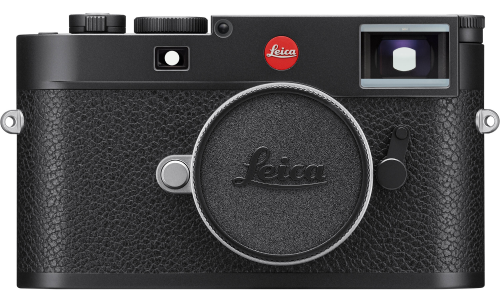
Digital rangefinder cameras are high-end interchangeable lens cameras heralded for their incredibly sharp images, precision focusing, and compact bodies. And while they have been around forever, they have only recently become more popular in the mainstream photography market.
Many factors have led to this boom in popularity, but the primary one is the jaw-dropping imaging capabilities of the most recent Leica M-Series cameras. The newest model is the Leica M11, and if you want to learn more about it, you’ve come to the right place. Below, we share everything you need to know about this one-of-a-kind digital rangefinder camera!
One amazing resource with loads of used Leica M11 cameras in stock and a place I have bought and sold countless camera gear over the years is MPB. They are a trustworthy and reliable online platform selling used photo and video kit at unbeatable prices.
Furthermore, all of their cameras are meticulously hand-inspected by expert product specialists and backed by warranties, allowing you to make your purchases confidently and worry-free. Another outstanding feature of MPB is its online platform, where you can trade in and sell your old camera equipment to help offset the cost of new-to-you gear you want and need.
What are we waiting for? Let’s jump in and take a closer look at the superb Leica M11 digital rangefinder camera!
Check out the video above by DPReview TV to learn more about the Leica M11 and see some example images shot with it.
Table of Contents
- Leica M11 Review: Specs and Features
- Leica M11 Review: Build and Handling
- Leica M11 Review: Photo and Video Capabilities
- Leica M11 Review: Price
- Final Thoughts on the Leica M11
Leica M11 Review: Specs and Features
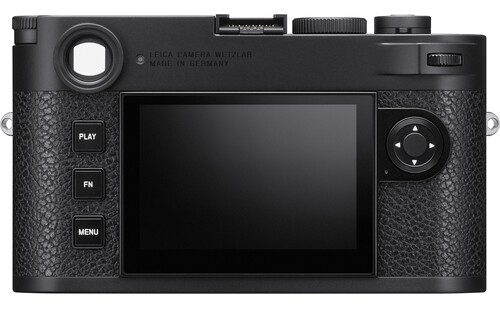
The brand new Leica M11 launched earlier this year and replaced the M10 as the company’s flagship digital rangefinder camera. Its signature specs are its high-resolution 60-megapixel full-frame sensor and powerful Maestro III image processing engine. The pair combine to make the M11 the fastest and most advanced digital rangefinder ever.
The image sensor features back-side illuminated (BSI) technology, which improves the camera's low-light performance, reduces noise, and leads to faster readout speeds. Additionally, the sensor features two layers of filtered glass which boost clarity and overall image quality.
Other highlights of this camera include 64GB of internal storage, live view stabilization, a large optical rangefinder, and built-in Wi-Fi/Bluetooth. Two important things to note are that the M11 doesn’t have autofocus or any video capabilities.
Here’s an in-depth look at the Leica M11 specs and key features:
- Camera Type: Digital Rangefinder
- Sensor: 60MP Full-Frame BSI-CMOS Sensor
- ISO: 64 - 50,000
- Lens Mount: Leica M Mount
- Speed: 4.5 fps
- Autofocus: None
- Video: None
- Leica M11 Size: 139 x 39 x 80 mm
- Leica M11 Weight: 640 grams
- Battery Life: 700 shots
- Stabilization: No
- Touchscreen: Yes
Leica M11 Review: Build and Handling
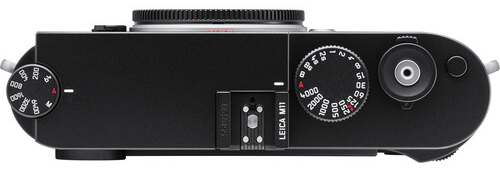
Turning to the physical construction of the Leica M11, the first thing that jumps out is its beautiful retro design. From the outside, it has the look and feel of classic Leica rangefinder cameras, but it’s jam-packed with advanced technology on the inside. It’s the best of both worlds! Also, its compact and lightweight body makes it perfect for travel and street photography.
Moreover, I absolutely love the handling and ergonomics of the M11. There are two exposure dials, a function button on the top plate, and four additional buttons on the camera's rear. Three of the buttons are fully customizable, which allows you to best match the camera to your needs, and increases workflow speeds.
Two more unique build features of the M11 are its large rear LCD and the elimination of a battery door. In lieu of having a battery door, the camera batteries have base plates that act as part of the camera’s exterior. This allows you to change batteries quickly and provides easy access to the memory card slot.
Learn More:
Leica M11 Review: Photo and Video Capabilities
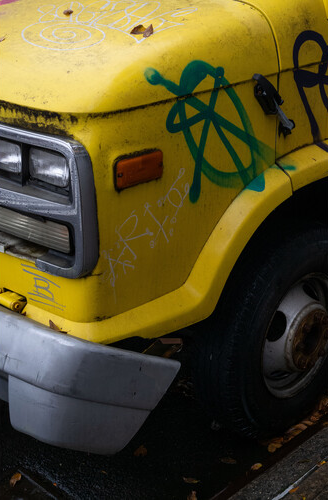
Shot on the Leica M11
In terms of imaging capabilities and performance, the Leica M11 is off the charts! Its 60MP max image resolution is impressive and is only matched by a handful of other professional mirrorless cameras like the Sony Alpha a7R IV and Phase One XF. With so many megapixels, your images will never suffer from a lack of quality, even if you have to enlarge them for printing.
Another cool imaging feature of this Leica digital rangefinder camera is the never-before-seen Triple Resolution Technology. It’s a state-of-the-art process that uses pixel binning and allows users to choose from three different-sized RAW images, 60MP, 30MP, or 18MP. Resolution drops as you lose megapixels, but the dynamic range and noise levels improve.
Photographers love a few more imaging features: the new electronic shutter, two steps of digital zoom, and long exposures of up to one hour. The electronic shutter tops out at 1/16,000 sec. The zoom steps are 1.3x and 1.8x. And the long exposure settings are great for creating time-lapses.
Once again, please remember that the M11 is a stills-only camera. It is not a video camera and has no video recording capabilities.
Leica M11 Review: Price
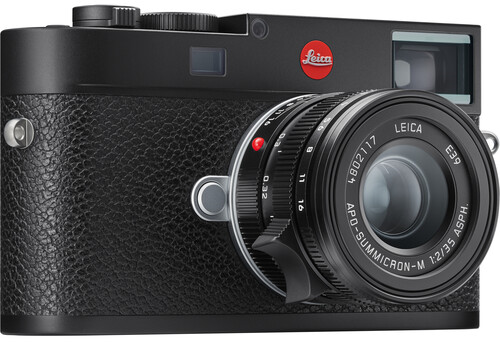
Lastly, let’s talk about the Leica M11 Price. For a new camera, you can expect to pay in the ballpark of around $9,000. However, if you are willing to consider buying a used Leica M11, you can knock off $1,000 or more from that price. We know that’s still a staggering amount of money to pay for a camera, but trust us, if you have the money, it’s worth every penny.
Final Thoughts on the Leica M11
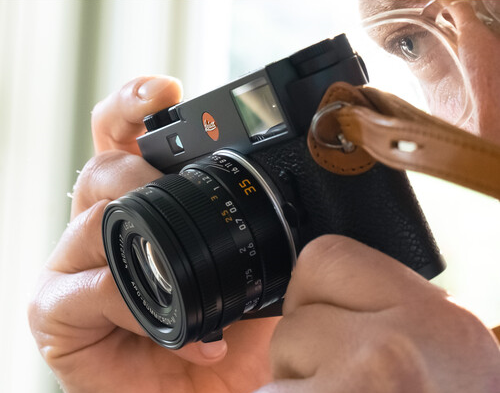
As you can see, the Leica M11 is a premium digital rangefinder camera with tons going for it. It’s an unbelievably well-made camera with a boatload of advanced features and specs, ideal for professional photographers who crave quality above all else. The lack of autofocus and video capabilities might scare some people away, but if you have the money, it’s unquestionably one of the best cameras on the market!
If you like the idea of shooting with a digital rangefinder camera but aren’t 100% sold on the Leica M11, here are a few more highly-rated options to consider:
And as a final thank you for reading our Leica M11 review, here are some of my favorite rangefinder lenses to use when working with digital rangefinder cameras. You can get killer deals on them now over at MPB!
- Leica 90mm f/2 Summicron
- Leica 50mm f/1.4 Summilux-M ASPH
- Leica 16-18-21mm f/4 Tri-Elmar-M ASPH
- Leica 75mm f/1.4 Summilux M
- Leica 35mm f/1.4 Summilux-M ASPH
Learn More:
We Recommend
Leica Q (Typ 116) Review
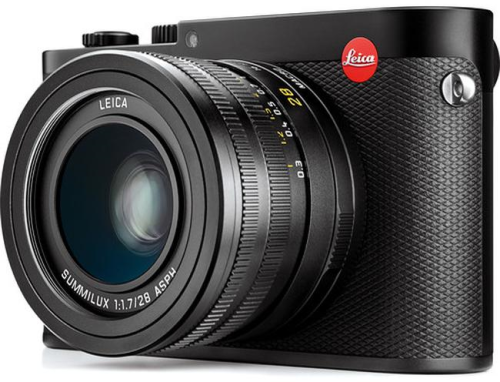
You've come to the right place if you’re hunting for a new camera and considering buying the Leica Q (Typ 116). Below, I share a comprehensive overview of the Leica Q (Typ 116) before diving in and examining how it holds up for still photography and video work, respectively.
One place with countless used Leica Q (Typ 116) cameras in stock is MPB. They are a trustworthy and reliable online platform that sells used photo and video kit for unbeatable low prices.
Furthermore, all of their cameras are carefully hand-inspected by experienced product specialists and backed by warranties, allowing you to make your purchases confidently and worry-free.
I’ve bought and sold several cameras and lenses using MPB over the years, and it’s always been a fast and straightforward experience. That’s why I love recommending others to check them out.
Ok, enough chit-chat! Let’s dig into this Leica Q review and find out why it’s still an excellent camera in 2022!
Table of Contents
- Leica Q (Typ 116) Overview
- Leica Q (Typ 116) Photo Performance
- Leica Q (Typ 116) Video Performance
- Final Thoughts on the Leica Q (Typ 116)
Leica Q (Typ 116) Overview
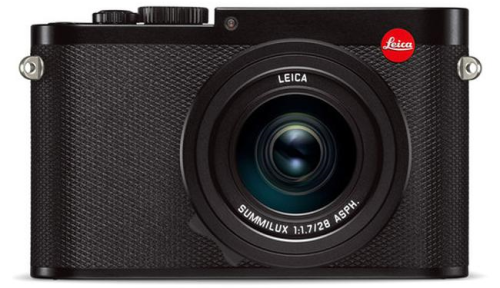
The Leica Q (Typ 116) is a luxury compact camera featuring a large 24.2 megapixel full-frame CMOS sensor and a powerful Maestro II image processing engine. It first hit stores in June 2015, and in 2019 it was succeeded by the even more sophisticated Leica Q2.
Fixed lens compact cameras are typically tailored toward budget consumers, but that is certainly not the case with the Leica Q (Typ 116). It is a high-end camera and one of the only bridge cameras on the planet to boast a full-frame (36 x 24 mm) sensor. Due to the enormous sensor and a handful of other premium features, even used Leica Q (Typ 116) cameras will cost you somewhere in the range of $3,000.
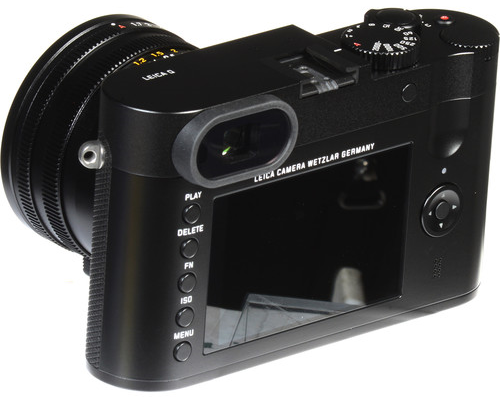
Turning to the construction and design of the camera, it has a durable magnesium alloy body. While the lack of a proper grip might feel awkward at first for people with larger hands, the overall handling and ergonomics of the Leica Q (Typ 116) are off the charts. There are two control dials on top of the camera, easy-to-use buttons on the back, and a fixed three-inch touchscreen LCD screen.
A few more noteworthy characteristics worth mentioning are the high-quality 28mm f/1.7 Summilux prime lens, its high-resolution 3.68M dot-equivalent electronic viewfinder, and its strong battery life.
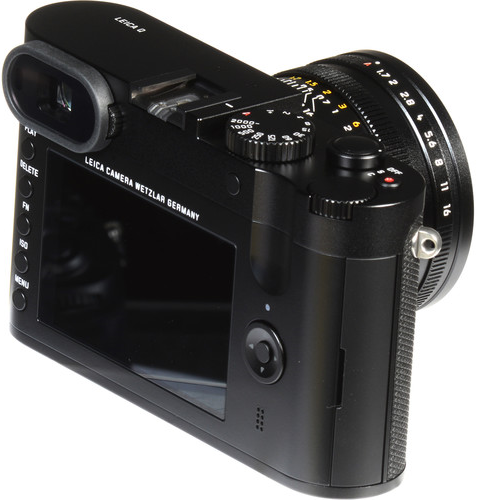
Here’s an in-depth look at the key features and specs of Leica Q (Type 116):
- Camera Type: Large Sensor Compact
- Sensor: 24.2MP Full-frame CMOS sensor
- ISO: 100 - 50,000
- Lens: Fixed 28mm f/1.7 Summilux lens
- Speed: 10.0 fps
- Autofocus: 49 contrast-detection points
- Video: 1080p/60p & 720p/30p
- Size/Weight: 130 x 80 x 93 mm / 640 grams (battery included)
- Battery Life: 300 shots
- Stabilization: Yes
- Touchscreen: Yes
Learn More:
Leica Q (Typ 116) Photo Performance
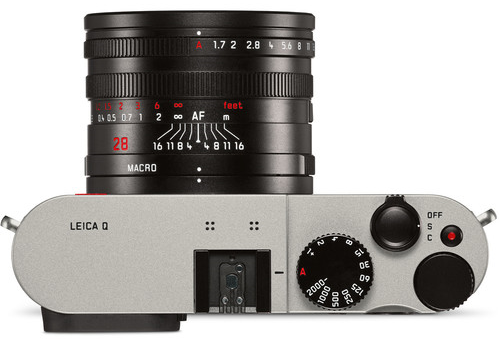
Without a doubt, photography is the strong point of the Leica Q (Typ 116). Photos consistently come out stunningly sharp, and the image quality of stills is some of the best I have ever witnessed from a compact camera. The only other compact cameras in the same ballpark are the Sony Cyber-shot DSC-RX1R Mark II and a couple of other Leica cameras.
The Leica Q (Typ 116) shoots both RAW and JPEG files. RAW files have a wide dynamic range, and thanks to the lack of an AA (anti-aliasing) filter, they also retain extra detail. RAW files are the best option for people who want to edit their photos in post-production using programs like Adobe Lightroom. Alternatively, JPEGs are better for people who wish to use pictures straight from the camera. JPEGs have added sharpness and their colors are bold and bright.
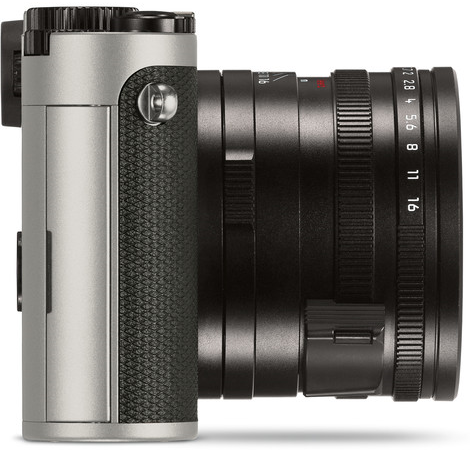
Another area the Leica Q (Typ 116) excels in is low-light shooting. Three factors that help boost the low-light performance are the massive ISO range, the built-in optical image stabilization, and the maximum aperture of f/1.7. Moreover, the high max aperture creates buttery bokeh effects ideal for portrait photography.
Finally, one more photo feature worth highlighting is the 10.0 frames per second max burst rate during continuous shooting. Factor in that the speed stays constant even when using the live view and continuous autofocus, and the Leica Q (Typ 116) is an excellent choice for sports and action photography.
Leica Q (Typ 116) Video Performance
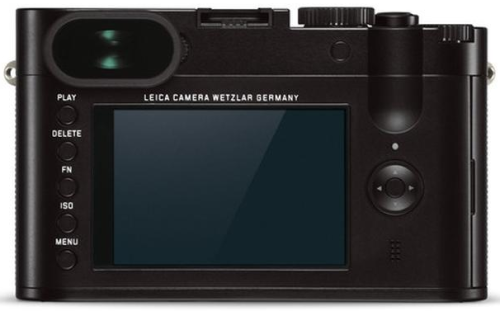
Unfortunately, the video capabilities of the Leica Q (Typ 116) don’t quite match up with all of the advanced photo features. For starters, there is no 4K video. Considering the fact that even most budget cameras today include it, the lack of 4K video is a total head-scratcher from Leica. Instead, the highest resolution movie frame rate sits at 1080p/60p.
Additionally, key video features such as a microphone port, a headphone port, and an articulating screen are missing. With that said, the 1080p video quality is quite solid. It won’t win any awards, but for capturing those special moments on the road, it gets the job done just fine. Furthermore, handheld shooting comes out smooth more often than not, courtesy of the stabilized lens.
Final Thoughts on the Leica Q (Typ 116)
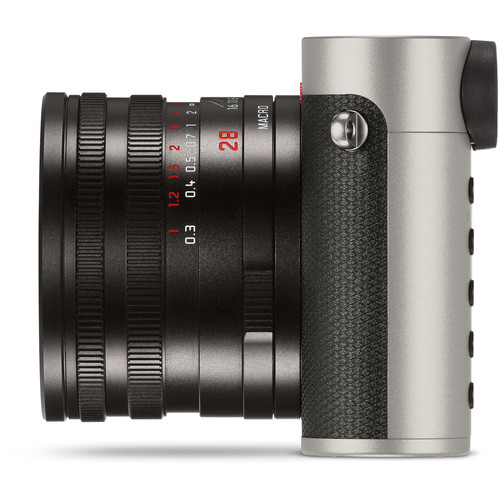
All in all, the Leica Q (Typ 116) is a high-performing stills camera ideal for those who don’t plan on recording many videos. While it’s not cheap, if you have the budget, you will not be disappointed with the results of this fantastic camera. In particular, a few groups of people who will love working with the Leica Q (Typ 116) are travel, street, sports, and portrait photographers.
For those interested in this type of camera but have a lower budget, check out the list below of other killer used Leica cameras currently on sale at MPB.
- Leica X2
- Leica X-E (Typ 102)
- Leica X Vario (Typ 107)
- Leica X (Typ 113) Digital Compact Camera
- Leica X-U (Type 113)
- Leica Q-P
Learn More:
We Recommend
Leica QP Review
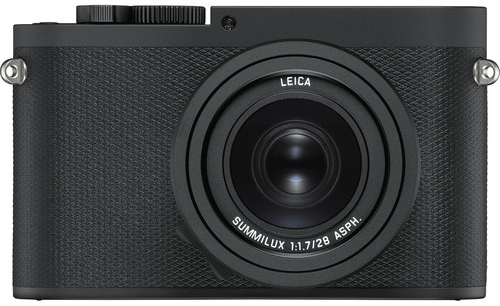
If you are considering getting a Leica QP but are still on the fence, you’ve come to the right place. In this article, we share everything there is to know about this one-of-a-kind point-and-shoot camera for photos and videos.
First, we do a general overview where we look at the key features and specs of the Leica QP. After that, we break down how it functions for photos and videos and provide you with a quick list of the camera's pros and cons.
One resource overflowing with used Leica QP cameras is MPB. They are a trustworthy and reliable online platform selling used photo and video kit for unbeatable low prices. Moreover, every camera is meticulously hand-inspected by experienced product specialists and backed by money-back guarantees, allowing you to make your purchases confidently and worry-free.
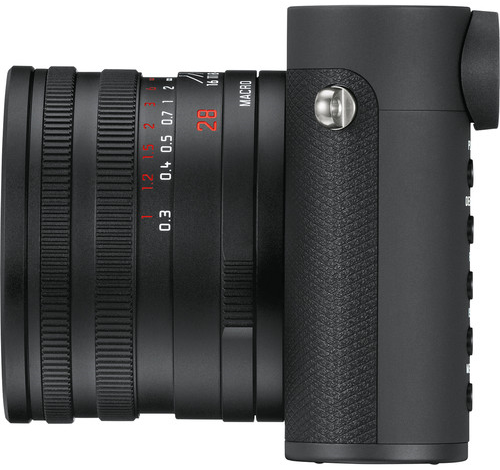
I’ve bought and sold countless cameras, lenses, and photography gear through MPBs online marketplace over the years, and it’s always been an easy and enjoyable experience. That’s why I love recommending others to check them out and take advantage of their killer deals.
With that said, let’s dive into this Leica QP review and discover everything there is to know about this marvelous camera!
Table of Contents
- Leica QP Overview
- Leica QP Imaging Capabilities
- Leica QP Video Capabilities
- Pros and Cons of the Leica QP
- Final Thoughts on the Leica QP
Leica QP Overview
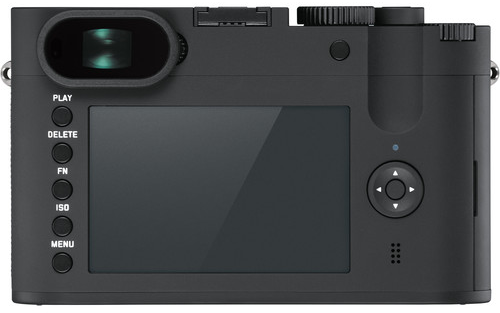
The Leica QP is a high-end compact camera boasting a high-resolution 24.2-megapixel sensor and an advanced Maestro II image processing engine. It was unveiled in November of 2019 as the successor to the Leica Q.
The first feature of this camera that stands out is its luxury Summilux lens. It is a versatile wide-angle lens with an equivalent focal length of 28mm and a maximum aperture of f/1.7. Moreover, the lens is built from high-quality glass and has three aspherical lens elements that make photos and videos super sharp.
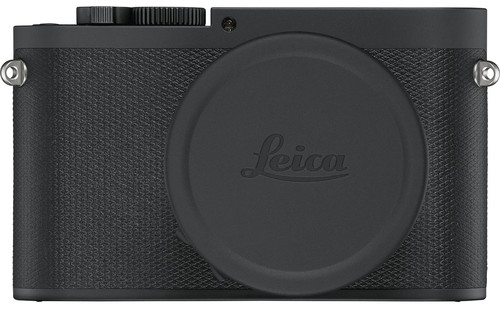
In terms of the camera’s design, it is constructed out of durable magnesium alloy and solid aluminum parts. Additionally, its compact and lightweight size makes it ideal for travel and everyday use. It’s so tiny that it can even fit in your pocket!
One more awesome thing worth mentioning is the Leica FOTOS application. It is available for Android and Apple IOS mobile devices, and you can use it as a remote shutter. Also, you can quickly transfer image and video files directly to the mobile app thanks to the Leica QP's built-in Wi-Fi.
Here’s an in-depth look at the key features and specs of the Leica QP:
- Camera Type: Large Sensor Compact
- Sensor: 24.2MP Full-Frame CMOS sensor
- ISO: 100 - 50,000
- Lens: Fixed 28mm f/1.7 Summilux lens
- Speed: 10.0 fps
- Autofocus: 49 AF points
- Video: 1080p/60p & 1080p/30p
- Size/Weight: 130 x 80 x 93 mm / 640 grams
- Battery Life: 300 shots
- Stabilization: No
- Touchscreen: Yes
Leica QP Imaging Capabilities
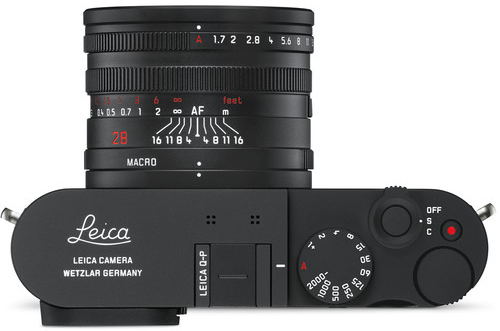
Still photography is where the Leica QP shines brightest. It has both JPEG and RAW imaging capabilities, and the 28mm focal length is excellent for documenting everything from dramatic landscapes to stunning street shots.
Another strong point of this camera is its low-light performance. While most point-and-shoot cameras have small image sensors, the large full-frame sensor of the Leica QP means more light hitting the sensor and brighter images. The wide ISO range and f/1.7 aperture enhance the image quality further when shooting with less light.
Also, the high max aperture creates buttery bokeh effects and is perfect for when you want to take pictures with a shallow depth of field. It’s one of the leading reasons why the Leica QP is one of the best compact cameras for portrait photography on sale today.
Lastly, the camera has a unique macro mode which enables you to practice macro photography from a distance of only 6.7-inches away. The macro setting is fantastic for food, product, and insect photography.
Learn More:
Leica QP Video Capabilities
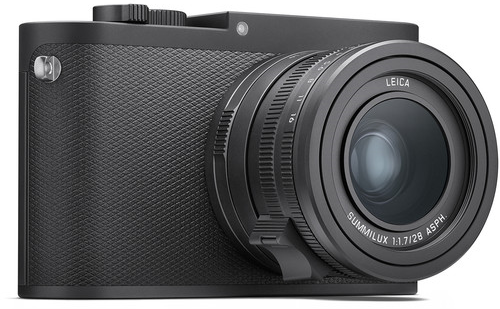
While it can’t compete with video-first compact cameras like the Sony ZV-1 or the Canon PowerShot G7 X III, the Leica QP is a powerful little video camera in its own right. And even though it lacks 4K capabilities, the 1080p Full HD video footage is vibrant and wonderfully sharp.
If you want your movies to have a cinematic look and feel, I recommend shooting in 1080p/30p. On the other hand, if you're going to slow your footage down in post-production, using programs like Adobe Premiere Pro or Final Cut Pro, you should use the 1080p/60p setting.
Furthermore, the camera’s high-resolution 3-inch touchscreen LCD is excellent for framing your scenes and video playback. You can also navigate through the menus and select autofocus points using the camera’s touchscreen.
Pros and Cons of the Leica QP
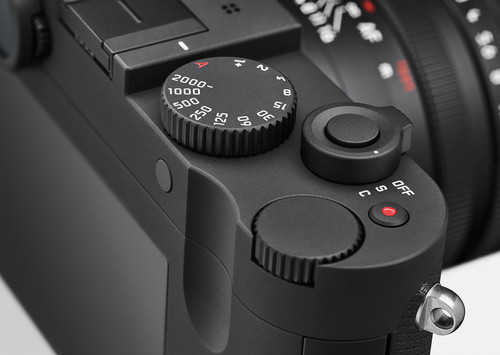
Pros:
- Incredibly portable
- Huge full-frame sensor
- Premium 28mm lens
- Terrific video and image quality
- Excellent autofocus, including face-detection
- Great handling and ergonomics
- Super-low maximum aperture
- Fast Wi-Fi for file transferring
- Macro and silent shooting modes
- High-resolution electronic viewfinder and rear display
Cons:
- Expensive
- No 4K video
- No microphone or headphone jacks
- No image stabilization
- Fixed screen
Final Thoughts on the Leica QP
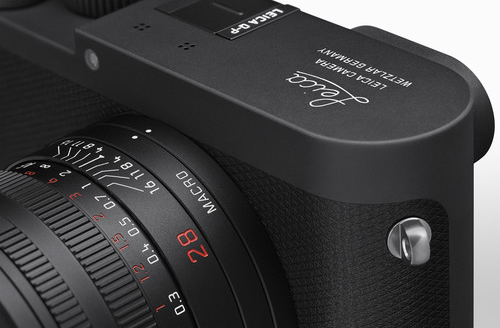
While Leica QP used cameras are undoubtedly not for everyone, if you want a luxury point-and-shoot camera for photography and videography, it’s one of the best cameras that money can buy! Three types of photographers, in particular, who will see amazing results from this camera are travel, landscape, and portrait photographers.
Finally, if you like Leica cameras but think this one is slightly out of your budget, you should check out the Leica Q (Typ 116) or the Leica X-U (Typ 113) on MPB.
Learn More:
We Recommend
Leica Sl Typ 601 Review
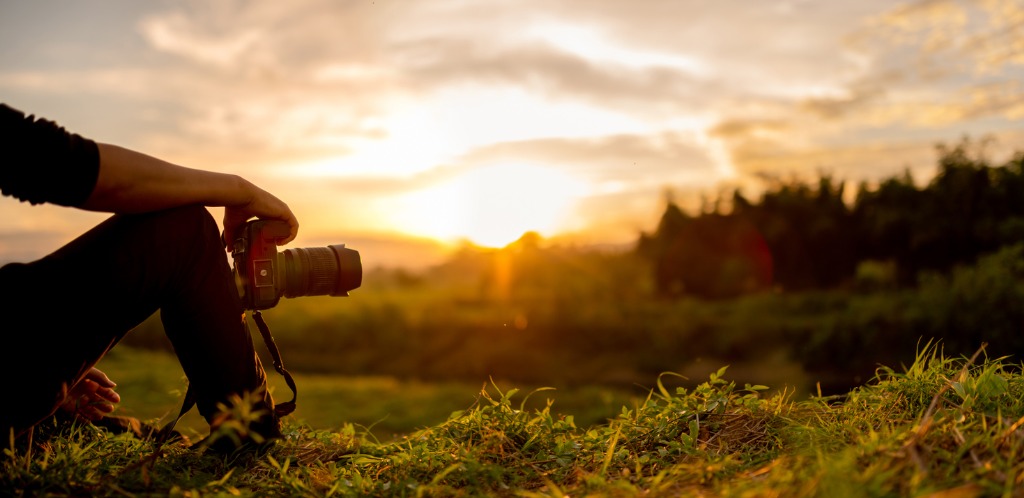
photo byPakorn_Khantiyaporn via iStock
The Leica SL Typ 601 is a high-end mirrorless camera with classic Leica aesthetics. This camera features a 24MP full-frame CMOS sensor, an almost shockingly incredible electronic viewfinder with 4.4 million dots, and the best AF system I’ve ever shot with.
But, to expect anything less than perfection by Leica would be foolish.
Of course, a high-end camera comes at a high-end price point. But, to own one of the most unique cameras on the market is invaluable.
You’ll learn everything else there is to love about this camera in our Leica SL Typ 601 review.
Leica SL Typ 601 Specs
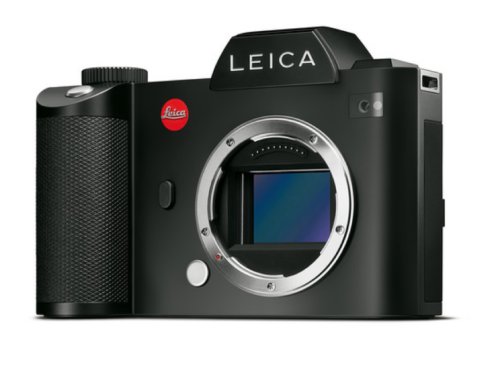
Other than the incredible Leica SL Typ 601 specs we already mentioned, this camera has great low-light shooting, a weather-sealed body, and 4K video.
It also boasts a 400-shot battery life, which is impressive for a camera with the capabilities this one has.
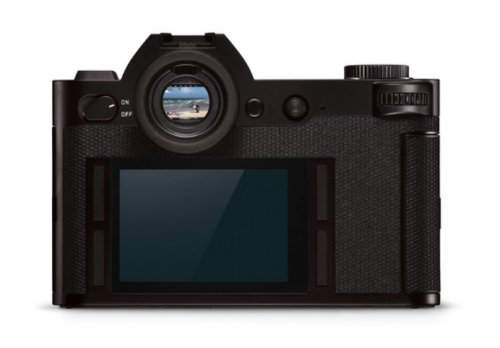
Leica SL Typ 601 Specs:
- 24MP CMOS sensor
- ISO range of 50-50,000
- EVF with 4.4M dots
- 11fps burst mode
- In-lens image stabilization
- 529-point AF system
- 4K video capabilities
- 2.95” 104M-dot touchscreen
- 400-shot battery life
- Built-in Wi-Fi and GPS capabilities
- 1.86 lbs
- Solid aluminum body
Recommended Photography Books
- National Geographic Photo Basics: The Ultimate Beginner's Guide to Great Photography
- Photography: The Definitive Visual History
- Read This if You Want to Take Great Photographs
Leica SL Typ 601 Body & Design
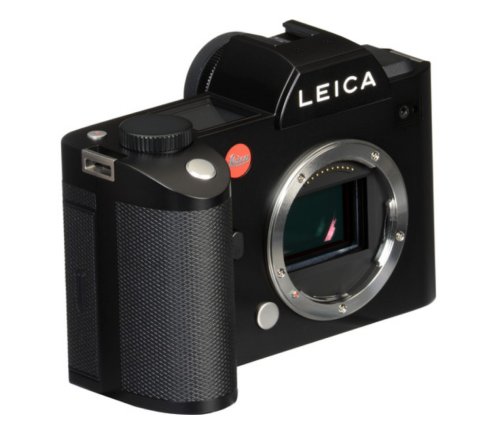
As with most Leica products, the Leica SL Typ 601 is made from solid aluminum and features easy to learn settings.
There are twin control dials and a joystick, as well as 8 customizable buttons, on the body. None of them are labeled to allow you to create whatever camera you want.
One problem with the design of this camera is that the joystick is a little touchy, so you may accidentally move the AF zone without meaning to, which I’ve done a few times.
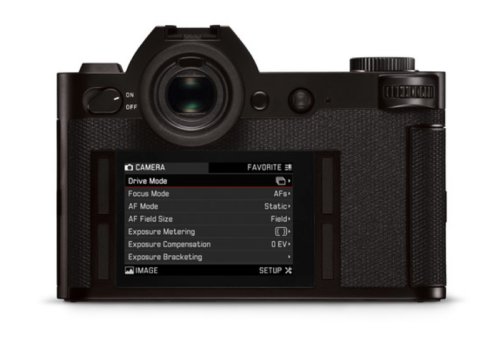
I also can’t not mention the EVF in this section because it is the best EVF to ever hit the mirrorless market.
Typically, I don’t do eye-level shooting with mirrorless cameras, but the Leica SL Typ 601 would be offended if you didn’t use its EVF.
Learn More:
Leica SL Typ 601 Build & Handling
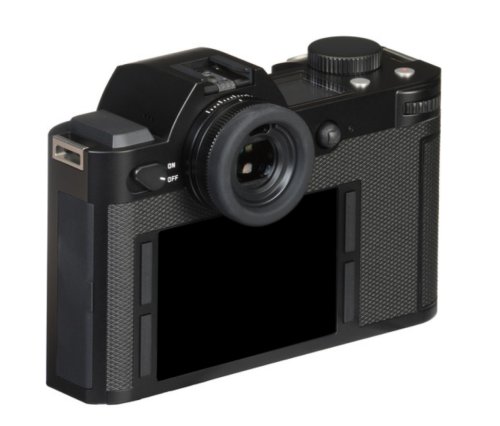
Despite the fact that this mirrorless acts much more like a DSLR with any of the 3 native lenses Leica built for it, it is still easy to handle.
The Leica SL Typ 601 features what some call a “heavy-duty grip,” which is another way of saying Leica knows you don’t want to drop this camera.
It’s basically entirely covered in a rubberized grip to make sure you don’t.
The weather-proofing on its body is also superb, so you know you won’t ruin your camera during an unforeseen storm.
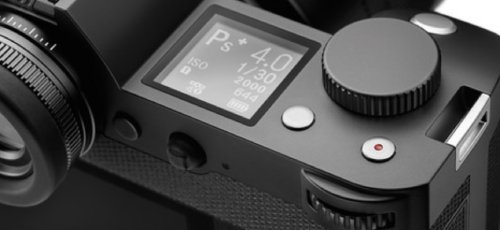
The top of the camera features a 1.3” monochrome LCD that allows you to change your settings quickly during a shoot, which is very helpful.
This LCD is just another reason why this camera is a blast to shoot with.
All in all, if I had to pick just one camera to shoot with for the rest of my life, it may just be the Leica SL Typ 601 for its rugged, take-anywhere handling.
Leica SL Typ 601 Video Performance
As can be seen in this video by Cinema 5D, this Leica features 4K video that is both sharp and flat. While I’m not sure whether Cinema 5D was using the L-Log gamma profile for the above video, it is available and it is excellent.
Mathieu Gasquet provides another look at the 4K video by the Leica SL Typ 601 above. It’s important to keep in mind that you can shoot this footage at 24p or 30p, and you can play around with some of the fun video extras like focus peaking.
Leica SL Typ 601 Price
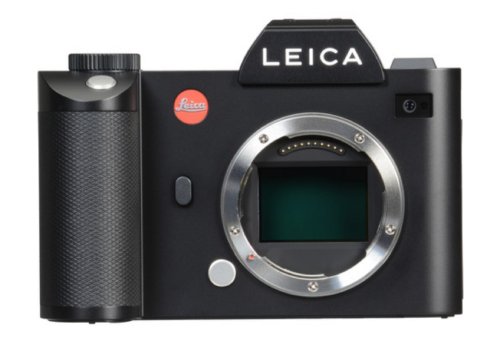
Although this camera is 5 years old, it was originally released at $7,000, so if you want this camera new it is still going to cost you $4,000.
However, for the smart spenders out there, you can get a Leica SL Typ 601 used for just $2,500 at MPB.
Learn More:
We Recommend
Leica SL2 Camera Review
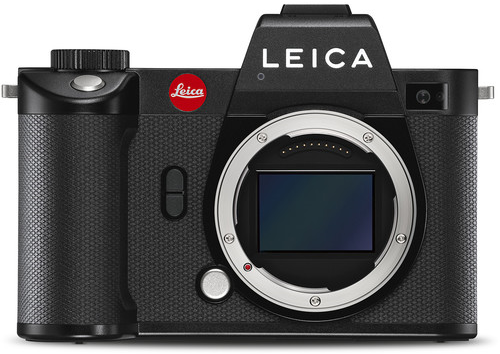
The Leica SL2 is no ordinary mirrorless camera, and if you are considering investing in one, you have come to the right place!
In this Leica SL2 camera review, we’ll break down the camera's photos and video specs, tell you who will benefit from shooting with it, share our favorite Leica lenses, and more. Moreover, thanks to innovative online platforms like MPB, buying a pre-owned Leica SL2 has never been cheaper and easier than it is today.
MPB is a trustworthy and reliable online platform selling pre-owned photo and video gear at unbeatable prices. All their cameras and lenses are meticulously hand-inspected by professional product specialists and backed by six-month warranties, allowing you to make your purchases confidently and worry-free.
We’ve been using MPBs online marketplace to buy, sell, and trade in camera equipment for years, and they are our go-to platform for all things photography related. That’s why we are stoked to give them a well-deserved shout-out today. With that said, it’s time to dive in and discover whether or not the Leica SL2 is a good fit for you and your needs in 2023!
Check out the video above by Matt Day to learn more about the do-it-all Leica SL2 and to see real-world photos and videos shot on it.
Table of Contents
- Leica SL2 Camera Review: Overview
- Leica SL2 Camera Review: Imaging Capabilities
- Leica SL2 Camera Review: Video Capabilities
- Recommended Lenses for the Leica SL2
- Final Thoughts on the Leica SL2<
Leica SL2 Camera Review: Overview
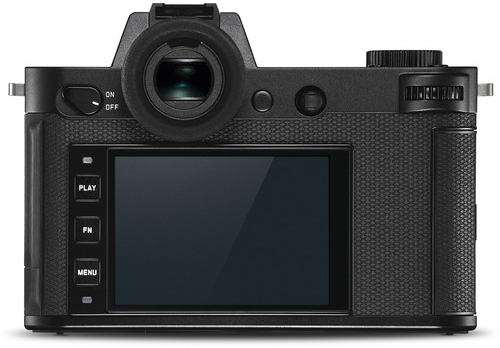
The Leica SL2 is a high-end mirrorless camera that debuted in 2019. It’s the company's second SL mirrorless camera, following the original Leica SL. The signature specs of this camera are its super high-resolution 47.3-megapixel full-frame image sensor and the all-new Maestro III image processor.
The sensor provides gorgeous photos and videos, while the processor improves the camera's overall speed and performance. The pair also works together to unlock advanced features like 5K video and Object Detection autofocus (AF).
Additionally, the camera body’s design and handling have received rave reviews from professionals and beginners alike. Notable design features include a large 3.2” touchscreen LCD, a top LCD, an “EyeRes” electronic viewfinder (EVF), multiple control dials, a handful of customizable buttons, and a fully-weather-sealed body.
Now, here’s an in-depth look at the key features and specs of the Leica SL2:
- Camera Type: Mirrorless
- Sensor: 47.3MP Full-Frame CMOS Sensor
- ISO: 100 - 50,000 (expandable to 50 - 50,500)
- Lens Mount: Leica L Mount
- Speed: 20.0 fps
- Autofocus: 225 focus points
- Video: 5K/30p, 4K/60p & 1080p/180p
- Size/Weight: 146 x 107 x 42 mm / 835 grams
- Battery Life: 370 shots
- Stabilization: Yes
- Touchscreen: Yes
- Pre-Owned Leica SL2 Price: $3,949 - $4,749
Leica SL2 Camera Review: Imaging Capabilities
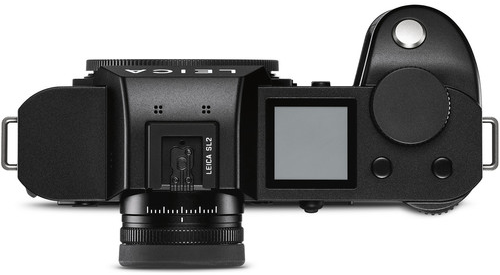
Let’s start with the giant (high-resolution) elephant in the room. The 47.3MP sensor of the Leica SL2! Very few cameras match the resolution and pixel count of the SL2, and the few that can usually are photography-first cameras like medium format cameras or the Sony Alpha a7R V. However, the SL2 is a hybrid camera jam-packed with both professional photo and video specs.
Beginners can capture JPEGs with bold, natural-looking colors, and professionals can shoot RAW files ideal for editing. RAW images have insane detail retention, industry-leading dynamic range, and 14 bits per RGB color depth. On top of that, the Maestro III image processor works hard to eliminate noise (even at high ISO levels), boosting low-light performance.
Other imaging features include 20 frames per second burst shooting, built-in Wi-Fi, and the omission of a low-pass filter. The fast continuous shooting makes the SL2 an excellent camera for wildlife, sports, and action photography. Wi-Fi allows you to instantly send photos to your mobile devices. And ditching the low-pass filter improves sharpness and image quality.
Learn More:
- 5 Reasons Why the Leica M7 is the Perfect Film Camera for 2023
- Leica M11 Review: A Superb Digital Rangefinder Camera
Leica SL2 Camera Review: Video Capabilities
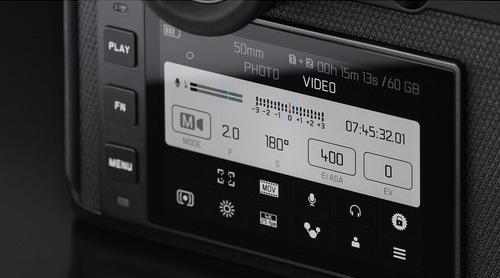
The impressive video capabilities make the Leica SL2 a great camera for videographers, YouTubers, vloggers, filmmakers, cinematographers, and anyone else who likes to record video. It has 5K, 4K, and 1080p Full HD video resolutions. 5K peaks at 30p, 4K at 60p, and 1080p goes all the way up to 180p!
We recommend most people stick with 4K, but if you are a professional, the stunning 5K video is an awesome tool to have at your disposal. And since 5K files take up a ton of space, you will be thrilled to hear that the SL2 now boasts dual SD card slots. Shooting at 1080p/120p creates slow-motion video, while 1080p/180p results in epic super-slow-motion clips.
The built-in headphone/microphone jack and in-body image stabilization (IBIS) are two more features you will love. The audio ports give you more precision and control over the audio quality of your videos, and the IBIS significantly enhances handheld video shooting. One downside of the Leica SL2 is it has a 29-minute recording limit.
Recommended Lenses for the Leica SL2
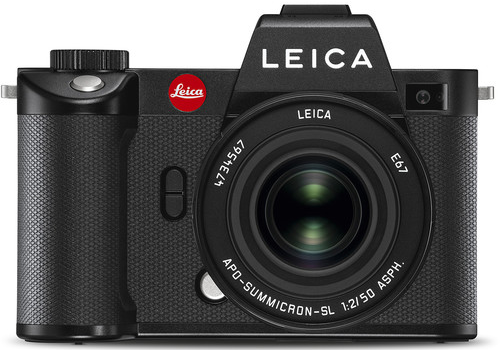
Here’s a quick list of the best Leica L Mount lenses for photo and video to use with the Leica SL2.
- Leica 35mm f/2 APO-Summicron-SL ASPH
- Leica 60mm f/2.8 APO-Macro-Elmarit-TL ASPH
- Leica 55-135mm f/3.5-4.5 APO-Vario-Elmar-TL ASPH
- Panasonic Lumix S Pro 16-35mm f/4
- Leica 23mm f/2 Summicron-TL ASPH
Final Thoughts on the Leica SL2
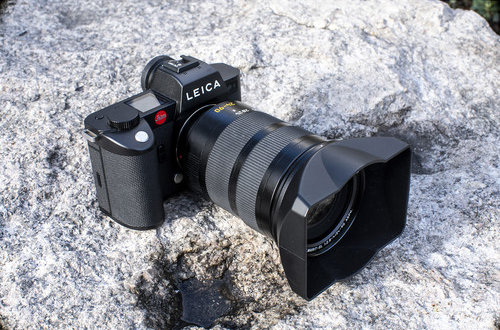
Leica is a luxury camera company that has produced premium camera equipment for over 100 years. And while the Leica SL2 is our top-rated Leica mirrorless camera on sale today, you can’t go wrong with any of them.
Check out the list below to see all the current Leica SL and Leica TL mirrorless cameras on the market. Lucky for you, all of them are in stock now at MPB!
- Leica SL2
- Leica SL2-S
- Leica SL2-S Reporter
- Leica SL (Typ 601)
- Leica CL
- Leica TL2
- Leica T (Typ 701)
- Leica CL with 18mm Lens (Paul Smith Edition)
Learn More:
We Recommend
Leica SL2-S Review
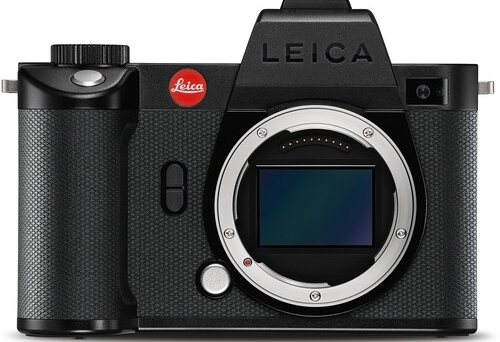
If you want an attractive, premium camera, you could do much worse than the Leica SL2-S. It’s the newest camera in a long line of high-end Leica mirrorless cameras, and its combination of photo and video specs left us in awe the first time we used one!
In this Leica SL2-S review, we’ll teach you everything there is to know about this luxury mirrorless camera. We’ll discuss its design and handling, photo specs, video specs, lens compatibility, and more. Additionally, thanks to websites like MPB, buying a used mirrorless camera has never been cheaper and easier.
Who is MPB? It’s a trustworthy and innovative photography company offering high-quality used photo and video gear at unbeatable prices. Better yet, every camera and lens it sells is hand-inspected by highly-trained product specialists with years of experience and backed by a six-month warranty, allowing you to make your purchases confidently and worry-free.
What truly sets MPB apart, though, is its one-of-a-kind online platform. It’s an amazing tool that has helped us save thousands of dollars buying, selling, and trading photography equipment over the years, and we believe it can do the same for you. Now, let’s take a closer look at the Leica SL2-S!
Check out the video above by Steve Huff Photo & HiFi to discover ten reasons why the Leica SL2-S is his favorite camera of all time.
Table of Contents
- Leica SL2-S: Overview
- Leica SL2-S: Design & Handling
- Leica SL2-S: Imaging Capabilities
- Leica SL2-S: Video Capabilities
- Recommended Lenses for the Leica SL2-S
- Final Thoughts on the Leica SL2-S
Leica SL2-S: Overview
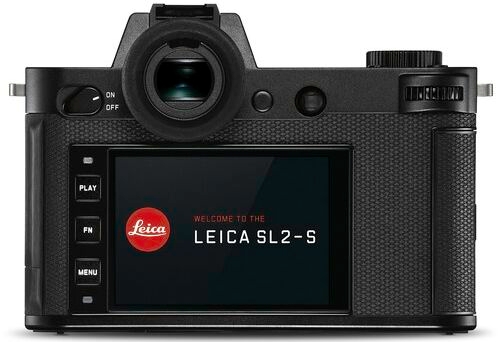
The Leica SL2-S debuted on shelves in 2021 as the little sister to the company’s flagship SL2. It features a lower resolution image sensor (24.6MP vs. 47.3MP) but better video performance (that we’ll break down later). Because of this, it’s a popular hybrid camera for digital content creators who like to shoot stills and video.
Furthermore, the SL2-S has a powerful Maestro III image processor, which improves the camera's overall speed (autofocus, burst shooting, video, etc.). Speaking of autofocus, the SL2-S uses an updated object-detection AF system that is reliable and accurate in both photo and video modes.
Built-in Wi-Fi and strong battery life are two other notable productivity features. The Wi-Fi lets you instantly transfer photos and videos to your mobile devices to share them with friends and family via social media or email. At the same time, the above-average battery life (510 shots) helps ensure you never miss a shot in the field.
Now, here’s a closer look at the Leica SL2-S specs and key features:
- Camera Type: Mirrorless
- Sensor: 24.6MP Full-Frame BSI CMOS Sensor
- ISO: 100 - 50,000 (expandable to 50 - 100,000)
- Lens Mount: Leica L Mount
- Speed: 25.0 fps
- Autofocus: 225 focus points
- Video: 4K/60p & 1080p/120p
- Size/Weight: 146 x 107 x 83 mm / 931 grams
- Battery Life: 510 shots
- Stabilization: Yes
- Touchscreen: Yes
- Weather-Sealed: Yes (IP54)
- Used Leica SL2-S Price: $2,669 - $3,029
Leica SL2-S: Design & Handling
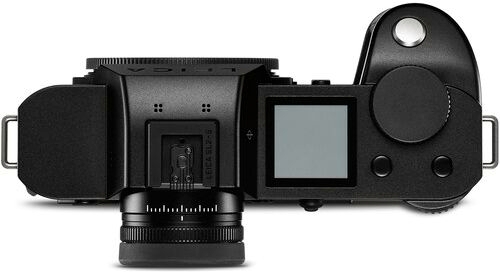
Like all Leica cameras, the SL2-S boasts a beautiful, minimalist body that was designed and made in Germany. However, unlike the brand's other cameras, it now has a fully weather-sealed body, making it ideal for people who commonly work outdoors, such as landscape, wildlife, and adventure photographers.
More outstanding design features you’ll love are the high-resolution 5.76M-dot electronic viewfinder (EVF), giant 3.2” touchscreen rear display, and 1.28” top LCD. Shooting with the EVF is perfect for photography while using the live display is better for videography.
Ergonomically, the SL2-S feels comfortable in the hands. You can quickly and easily change its camera settings using one of the dials or customizable buttons. Then, you can view your current settings on the top LCD. Another handling strength is the dual photo and video menu systems, which means you don’t have to constantly adjust settings when switching between modes.
Learn More:
Leica SL2-S: Imaging Capabilities
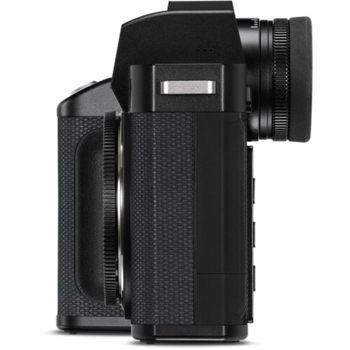
One of the signature features of the Leica SL2-S is its 24.6-megapixel BSI (back-side illuminated) full-frame sensor. It’s the first-ever Leica camera with a BSI sensor, which improves its low-light performance and helps reduce unwanted noise. The sensor's lack of a low-pass filter also improves the colors and sharpness of images shot on the SL2-S.
The SL2-S can capture images at an impressive 25 fps when shooting bursts using the electronic shutter. If you prefer working with the mechanical shutter, that number drops to a still-solid nine fps. The fast, continuous shooting and dependable AF make the SL2-S a good choice for sport, action, and street photography.
Other awesome photography features are the multi-shot, panorama, and HDR shooting modes. Multi-shot mode combines eight exposures into one super-high-resolution 96MP image. Panorama mode creates gorgeous panoramic photos directly in the camera. And HDR mode boosts dynamic range, which is better for photo editing.
Leica SL2-S: Video Capabilities
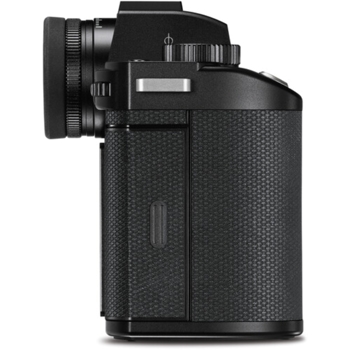
While Leica has long been a major player in the photography industry, its cameras were never known for their video performance. That all changed when they released the Leica SL2-S. It’s, without a doubt, the best Leica video camera ever produced. And it’s not just us saying it—the video options and specs back it up.
For starters, the SL2-S has excellent 4K video capabilities. It records 4K/60p and 4K/30p videos with an APS-C crop factor (1.5x crop) and 4K/24p footage that uses the entire sensor and is oversampled from a 6K area. Moreover, it can film stunning 1080p/120p Full HD slow-motion video.
Other advanced video specs include 10-bit color, various professional codec options, unlimited recording, and two 3.5mm jacks. 10-bit color leads to more vibrant, natural-looking colors and gives you more control when color grading in post-production. Codec options include H.265, V-Log, and HLG. Unlimited recording is great for vlogging and live streaming. Lastly, the two 3.5mm jacks let you attach a microphone or headphones to better monitor audio levels.
Recommended Lenses for the Leica SL2-S
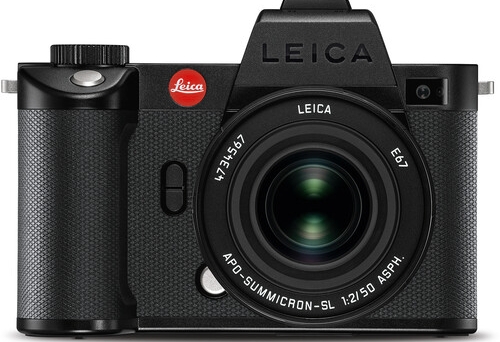
Here’s a quick list of some of the best Leica L mount lenses for photos and video to pair with the Leica SL2-S.
- Leica 50mm f/2 Summicron-SL ASP
- Leica 35mm f/2 APO-Summicron-SL ASPH
- Leica 75mm f/2 APO-Summicron-SL ASPH
- Leica Vario-Elmarit-SL 24-70mm f/2.8 ASPH
- Leica 90-280mm f/2.8-4 APO-Vario-Elmarit-SL
Final Thoughts on the Leica SL2-S
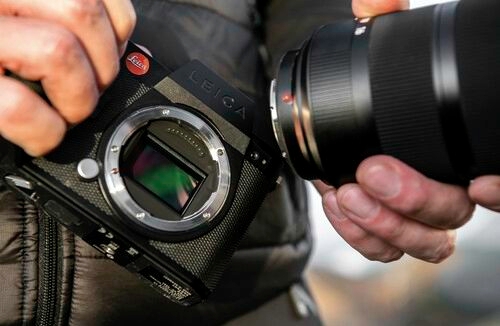
As much as we love the Leica SL2-S, we know its expensive price will limit the number of people interested in it. With that said, it’s the first Leica camera whose video performance genuinely stacks up with its photo performance. So, if you are a hybrid shooter and can find room for it within your budget, we promise you won’t regret it!
Check out the list below to compare and contrast the SL2-S with other popular Leica cameras in stock now at MPB. We’ve included links to Leica SL mirrorless cameras, Leica TL mirrorless cameras, Leica digital rangefinder cameras, and Leica medium format cameras.
Learn More:
- Four Things to Know About the Leica M Typ 262
- 4 Reasons the Leica M10 Monochrom Should Be Your Next Camera
Disclaimer: Our articles might have affiliate links and the occasional sponsored content, but don't sweat it – if you buy something, we get a little kickback at no extra cost to you, and we only hype products we truly believe in!
We Recommend
Save Money With these Used Leica Lenses
Leica cameras are meant to be used with Leica lenses. In fact, for many photographers, using Leica lenses is the sole reason for having a Leica camera.
There are three main 35mm format divisions for Leica lenses, based on what camera they’ll be mounted on. The Leica S2 medium format camera takes its own set of lenses, being a larger format than 35mm Full Frame.
In 35mm Full Frame format, there are Leica M lenses for their rangefinder cameras, Leica R lenses for their SLRs, and Leica SL lenses for the mirrorless cameras partnered with Panasonic.
Table of Contents
- What Are Leica Lenses Worth?
- MPB Used Photographic Equipment
- Leica 50mm f/0.95 Noctilux-M Asph
- Leica 35mm f/3.5 Summaron
- Leica Vario-Elmarit-SL 24-90mm f/2.8-4 Asph
- Sigma 100-400mm f/5-6.3 DG DN OS Contemporary
- Voigtlander 12mm f/5.6 VM Ultra Wide Heliar IIv
What Are Leica Lenses Worth?
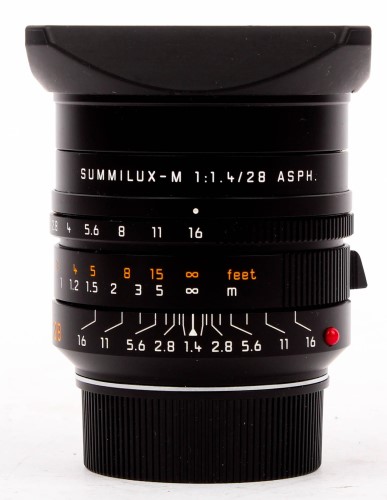
What are Leica lenses worth?
Something you will quickly notice about Leica lenses and cameras is that they tend to be rather expensive. For those wanting the highest quality cameras and lenses, higher prices are just what gets paid for these fine imaging tools.
One way to save money on Leica lenses is to shop for them on the used market. You will want to choose a used dealer that takes good care of its customers and has assurances for providing good quality equipment.
MPB Used Photographic Equipment

I have come to favor the used camera experts at MPB for my used camera and lens purchases for a couple of big reasons.
One, they grade the gear they sell so you know the precise condition of it. Is it Like-New? Excellent? Good? Each item is clearly marked, so you know what to expect when it comes in the mail.
The second big reason is that MPB provides a 6-month warranty on most items they sell. MPB also has a no-fuss 7-day return policy on your purchases. So, it’s my choice on where to find used Leica lenses that are in excellent condition and won’t cost nearly as much as brand new Leica lenses.
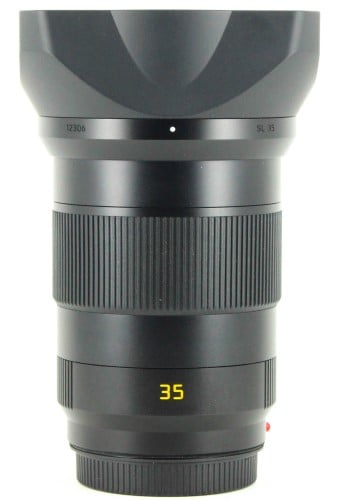
Let’s look at what’s in their current inventory of used Leica lenses for M-mount, R-mount, and SL-mount. Since their inventory of Leica lenses will vary quite a bit based on what is available, some of the links to follow will take you to a placeholder page which will let you see what’s currently on hand.
Learn More:
- 4 Questions to Ask Before Buying a Used Lens
- What Is a Rangefinder Camera?
- The Most Versatile Focal Length
Leica 50mm f/0.95 Noctilux-M Asph
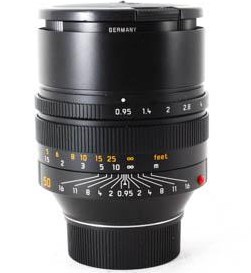
Among the fastest lenses ever produced are the Noctilux M-mount normal focal length prime lenses. The original ultrafast Leica lenses from E. Leitz were at an f-stop of f/1.2, quickly replaced with an f-stop of f/1.0, which was outstanding. The current lens is now f/0.95, a number that almost sounds like science fiction, but it’s real.
Accurately focusing an ultrafast lens is a job that the Leica M rangefinder cameras are superbly designed for. The superimposed bright line double image is quick, unambiguous, and extremely accurate.
The lens is big and heavy, especially when mounted on a Leica M camera, but it is also super sharp. The aspherical elements help the lens produce superior sharpness at all apertures and deliver bokeh that is out of this world.
Brand-new, these Leica lenses will set you back almost $13,000, but a like-new condition used example is a little less than $9,000, only $8,809. Only! I told you Leica lenses were expensive, but this Noctilux is a specialty lens, so the pricing is understandably high.
Leica 35mm f/3.5 Summaron
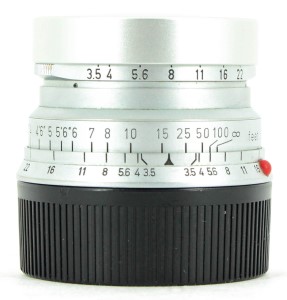
The 35mm focal length is considered an alternative normal focal length, especially amongst rangefinder camera aficionados. The humble maximum aperture of these Leica lenses, namely f/3.5, keeps this lens as one of the most compact of all the Leica lenses.
It is extremely sharp, has excellent contrast, and a used example in excellent condition is currently running only $719.00 at MPB.
Leica Vario-Elmarit-SL 24-90mm f/2.8-4 Asph
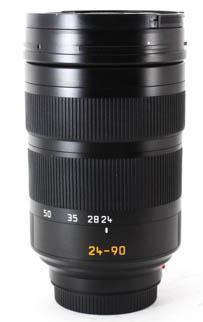
Photographers shooting on the new L-mount mirrorless Leica cameras will enjoy the versatility, sharpness, and reliability of the Vario Elmarit series of zoom Leica lenses.
The lens has a fast maximum aperture at the short end of f/2.8, and a like-new version will cost about $4,199 as opposed to the $5,595 that brand new Leica lenses cost.
Sigma 100-400mm f/5-6.3 DG DN OS Contemporary
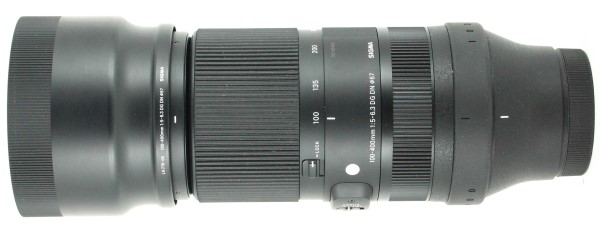
Leica lenses in L-mount for Full Frame mirrorless also can be found by third-party manufacturers.
Sigma telephoto zoom lenses are sharp and rugged while also having great balance when mounted on the new L-mount cameras. A like-new condition lens is only $854.00.
Voigtlander 12mm f/5.6 VM Ultra Wide Heliar II
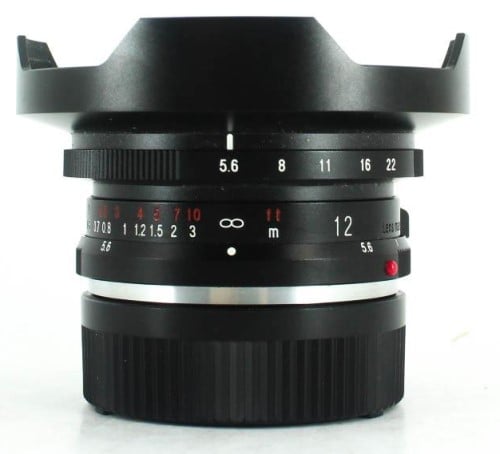
It’s not very fast with a maximum aperture of f/5.6, but the Voigtlander ultra-wide Leica lenses are virtually distortion-free. For users of the M-mount rangefinder cameras, this lens captures 121 degrees of scenery and can be found in excellent condition for $499.00.
Finding Leica lenses used at a reputable store such as MPB is a great way to save money on these amazing photographic tools. Browse their selection today to see for yourself!
Learn More:
We Recommend
These Crazy Camera Lenses Have to Be Seen to Be Believed
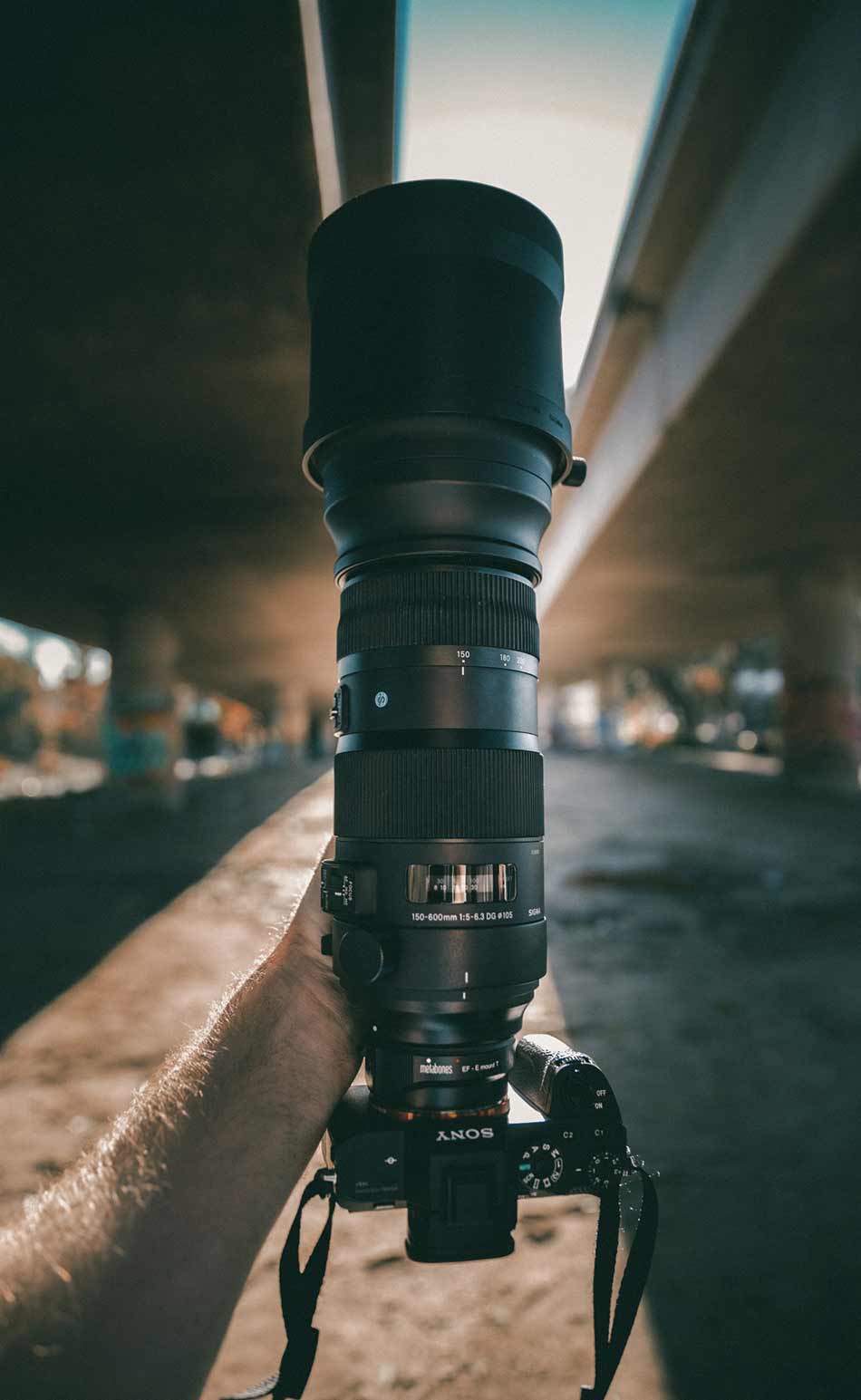
Photo by Jakob Owens on Unsplash
People have been fascinated with crazy camera lenses since the dawn of photography, when crazy camera lenses were any camera lenses.
Now, unique camera lenses are a sight to behold. Sometimes, they’re ridiculously large and sometimes they’re ridiculously vintage. However, I’d bet money you’ve never seen all of these 7 rare camera lenses.
Table of Contents
- Fujifilm XF 56mm f/1.2 R APD
- Canon MP-E 65mm f/2.8 1-5x Macro
- Leica Noctilux-M 50mm f/0.95 ASPH
- Lomography Petzval 85mm f/2.2
- Sigma 200-500mm f/28 APO EX DG
- Venus Optics Laowa 15mm f/4 Macro
- Canon EF 1200mm f/5.6L USM
- Where to Buy Your Crazy Camera Lenses
Fujifilm XF 56mm f/1.2 R APD
The first on my list of unique camera lenses is this apodization filter Fujifilm lens. Fujifilm released an XF 56mm f/1.2R exactly 9 months before they released this lens, the exact same lens except for the addition of the apodization filter.
Now, apodization filters are very rarely included in lenses because you could just as easily buy an attachable apodization filter. An apodization filter is a type of graduated neutral density filter that allows you to achieve very creamy bokeh and a very dramatic blurring in shallow depth-of-field photos.
It also features 2 aperture values: one aperture value for the f/stop value and one for the depth of field.
See this lens in action in the video above by Zed Pro Media.
Canon MP-E 65mm f/2.8 1-5x Macro
The Canon MP-E has an insane range for macro photography, and no range for anything else. If you’re looking to photograph something in high-magnification, though, this bad boy is for you.
As an example of the power behind this macro lens, you can fill a full-frame sensor with just one ant, and the way it pulls it off is by only allow photographers to shoot objects up to 4 inches away from the front of the lens.
You heard me right, in order to use this macro lens, you have a whole 3.4 inches of wiggle room; you can shoot from 1.6 inches to 4 inches away from your subject.
The interesting focusing range aside, this camera comes with an Ultra Low Dispersion glass element which helps clear your photos of any distortions or chromatic aberrations so those ants look as crisp as they do vibrantly black or red.
Learn more about this lens in the video above by Snazzy Labs.
Leica Noctilux-M 50mm f/0.95 ASPH
Okay, I admit you may have heard of this Leica lens before but I had to touch on it because of its cult status.
This Noctilux was a replacement that came out in 2008, a mere 30 years after it’s predecessor, the f/1.2 Noctilux of 1966 was released.
This lens features an incredibly bright maximum aperture (obviously) which lets you shoot incredibly well in low light. But, it also shoots unlike any lens I’ve ever shot with. No, it isn’t even close to Leica’s sharpest lens but it has character. Your shots come out looking almost vintage with a softness that can make even the ugliest of places look almost pristine.
Plus, it’s only 1.5 pounds which is a feat for the unique camera lenses on this list.
Check out this lens in the video above by Leica Review.
Lomography Petzval 85mm f/2.2
This is hands down the most beautiful, unique camera lens on this list, and that’s because it’s a recreation of the 175-year-old Lomo Petzval lens (except this time you can use it on Canon and Nikon DSLRs).
The Kickstarter for this Petzval recreation rapidly raised over $1 million from over 3,000 camera enthusiasts. This happened, in part, thanks to the glowing history of the original Petzval lens which revolutionized photography.
Each one of these recreated Petzval lenses are crafted out of brass, and comes with a Waterhouse aperture set (f/2.2, f/4, f/5.6, f/8, f/11 and f/16).
This Petzval also does what the original Petzval did: it takes incredible portraits.
Get a hands-on review of this lens in the video above by Irene Rudnyk.
Learn More:
Sigma 200-500mm f/28 APO EX DG
I’ve always hated the look of this Sigma lens because it looks like it belongs on the top of a tank shooting missiles instead of in the hands of a photographer.
This lens remains the longest zoom to feature a f/2.8 max aperture. It also weighs 25 pounds and features a rechargeable battery to power the incredible zoom.
My favorite aspect of this crazy camera lens is that it doesn’t unscrew from its camera, the back of the lens unlocks so you can unscrew the camera out of the lens.
However, you really need to watch the above video in order to see what this ridiculous creature looks like.
See Matt Granger with this massive lens in the video above by PhotoNewsReviews.
Venus Optics Laowa 15mm f/4 Macro
I actually got the chance to use this macro lens a few years back, and everything they say is true. You can shoot from 0.2” away from your subject with this funky little lens and create a 1:1 magnification ratio.
It’s known as a wide angle lens and a macro lens because it does both. It comes with a shift mechanism to move the optics up or down the lens mount (hint: panoramas, anyone?).
Plus, I love a camera lens maker that thinks about the little people, the little people being broke photographers. The filter thread allows you to use filters easily without splurging on expensive square filter systems.
When you’re using this camera lens as a wide-angle, you’ll either love or hate the results. The center of your photo will be extremely sharp if you’re shooting at a close distance, but the corners of your shot may appear almost smudged like a painting.
But, for a macro/wide-angle/do-it-all lens, it handles chromatic aberrations like a champion. Your shots may still suffer from chromatic aberrations in the corners (like the above-mentioned problem), but they will be very consistent, easy to take out in post-production, and won’t happen when shooting low contrast shots stopped down.
DSLR Video Shooter takes a closer look at this lens in the video above.
Canon EF 1200mm f/5.6L USM
One of these beautiful lenses was sold on B&H back in 2016 for just $180,000, which is a steal if you ask me.
It only took the lens 8 years on the market to sell (who woulda’ guessed).
This lens is the longest fixed telephoto lens ever built by Canon and it focuses down to 49.5-feet. It’s rumored that Canon never made more than 20 of these lenses, which helped me to understand why someone would buy this instead of a home.
The lenses were made in the 1990s, and Canon was only able to produce 2 of them a year thanks to the time it took to “grow fluorite crystals large enough to be ground and polished for use in the lens.”
It weighs 36 pounds, which also makes it the heaviest crazy camera lens on our list, and looks seriously hilarious when strapped onto a regular-sized DSLR.
Get a complete overview of this lens in the video above by B&H Photo Video.
Where to Buy Your Crazy Camera Lenses
Though many of these crazy camera lenses are tough to come by, you might be able to find a few of them on the used market.
And even if you can’t, the used market is a great place to find more traditional lenses that you can use every day.
I use Lensfinder for buying my used glass because it’s such an easy process.
Just logon to the site, search for what you need, and peruse the listings other folks have posted.
But unlike eBay, you don’t have to look through tons of unrelated search results (or pay tons of fees, either).
And unlike Craigslist, you don’t have to worry about scams because Lensfinder has built-in fraud protection. You also can communicate with sellers directly on the platform if you need to ask questions.
It’s just a clean, simple way to buy used gear. You can sell your old gear on Lensfinder and make a bit of money too!
Learn More:
We Recommend
What is the Best Affordable Compact Camera?
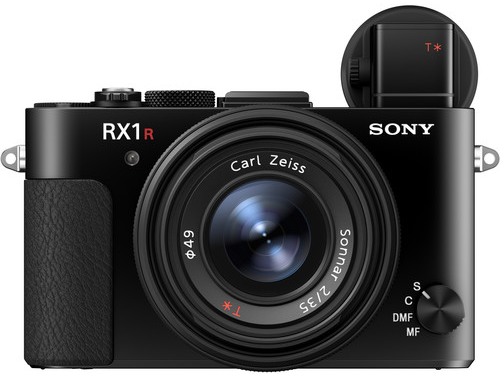
Sometimes we want to use a better, more versatile and adjustable camera than our smartphone but not carry around our regular camera rig. A compact camera from one of the major manufacturers will probably fill our wants and needs.
Since good photography equipment can carry a bigger price tag than some other hobbies, being affordable is a great quality to consider when shopping. I like to look at used camera equipment to stretch out my equipment dollars. This applies to a compact camera or any other type of gear.
Used or preowned cameras and lenses are an excellent way to save money when shopping for your next camera, lens, or flash. Used doesn’t mean old, either. Like cars and trucks, many items are up for sale as used gear are still in current production.
The online platform MPB is my “go-to” place for pre-owned photography gear. I like them because they are owned and run by photographers, they offer a 7-day exchange and 6-month warranty on what they sell, and I can also trade in or sell to them my own stuff that I don’t need or want anymore for even more savings.
What is the best affordable compact camera you can get right now at MPB? Let’s have a look!
Table of Contents:
- Best Affordable Compact Camera Overview
- Fujifilm X100F APS-C
- Sony Cyber-Shot DSC-RXR Mark II Full Frame
- Leica Q2 Full Frame
- Other Best Affordable Compact Camera Options
- Best Affordable Compact Camera Wrap Up
Best Affordable Compact Camera Overview
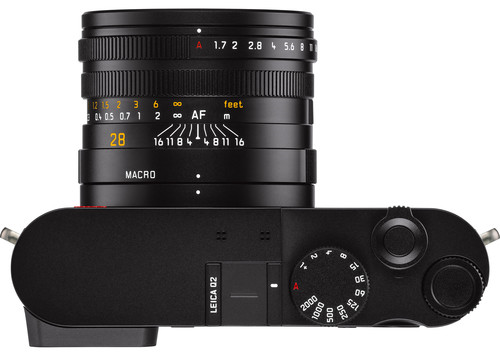
There are a lot of models out there that could be in the running for your choice of the best affordable compact camera. Some have smaller sensors than what we have in our primary cameras, but the best affordable compact cameras will usually have a larger sensor than the run-of-mill point & shoot-style camera.
What I’m looking for as the best affordable compact camera will have three things in common: a large sensor, manual control capability, and a truly compact size.
Many of the best affordable compact cameras will have sensors ranging from the 1”-Type and up to 4/3rds, APS-C, and Full Frame formats. Anything smaller than the 1”-Type, I don’t consider to be in the running since Apple iPhones and several Android smartphones have amazing small sensor cameras built-in, so why bother?
Manual exposure controls and focus are on my must-have list of features for the best affordable compact camera because I often use the compact camera as a serious photographic tool instead of merely taking snapshots. Capturing RAW files and having the ability to change settings away from automation gives me the control I desire.
Finally, I want the camera actually to be compact. If not saving me in size and weight, I may as well just take out my regular camera gear. Having the automation for simply enjoying taking snapshots (yes, I sometimes take snapshots) is also nice.
With my criteria nailed down, let's see what I can find on my favorite money-saving online platform MPB in the way of the best affordable compact camera models.
Fujifilm X100F APS-C
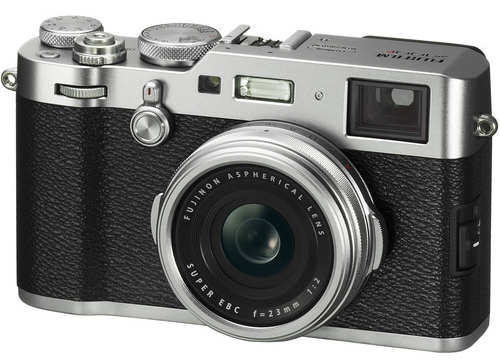
Fuji has made very high-quality compact cameras in multiple film formats since I’ve been in photography. Their digital cameras have carried on that tradition.
The Fujifilm X100 F camera is one of the best affordable compact cameras due to that same Fuji quality and a 24.3MP APS-C format sensor. A 23mm f/2.0 lens is mated to the camera and is a stellar performer. You can use the swift AF or manually focus with the outer ring.
It uses a hybrid optical and electronic viewfinder, which is versatile for all shooting styles. Video is limited to 1080p, but it retains all the quality you want from the lens and sensor.
Though compact, the Fujifilm X100F has soft heft due to the mostly metal constriction used throughout the camera body. It’s a high-quality photography tool that can also be used as a relaxing and just-take-pictures-type of camera.
I found several on MPB in Good, Excellent, and Like New condition ranging in price from $1149 to $1369.
Sony Cyber-Shot DSC-RX1R Mark II Full Frame
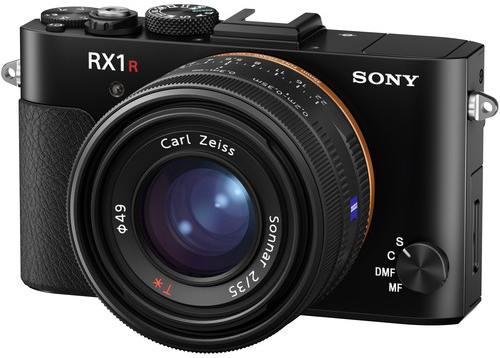
The Sony Cyber-Shot DSC-RX1R mk II is an amazing model and definitely counts as one of my favorite choices for the best affordable compact camera.
Sony really knows what they’re doing concerning compact, high-quality cameras. It uses a Full Frame format 42.4MP sensor, which provides amazing image resolution. It’s paired with an ultra-high quality Zeiss 35mm f/2.0 lens.
This camera pretty much qualifies as a professional camera with a robust build quality and a superb lens and sensor combination. It has full automation and full manual control of exposure and focus, so you control every aspect of the image capture or just use it as a grab-and-go camera.
Sony has an edge regarding video as a company, and it shows in this camera, recording 4K video and excellent sound. It even has an HDMI port for adding this camera to a high-end video recording setup.
In Good to Excellent condition, I found this camera at MPB from $1759 to $2199.
Leica Q2 Full Frame
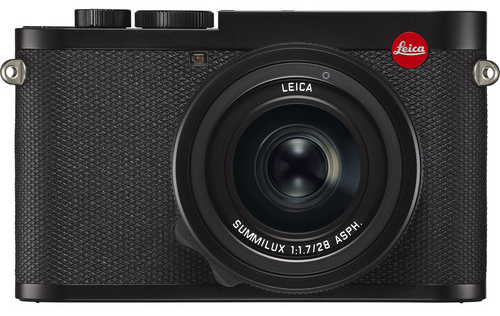
I know what you’re about to say. A Leica in a list of best affordable compact cameras? Well, hear me out. A Leica Q2can be found on MPB in Good, Excellent, and Like New condition for between $3739 to $4519.
Have a look at this YouTube video from Kyle Meshna for an honest opinion after six months of using a Leica Q2:
If you’re already shooting Leica, you’re aware of their pricing structure and of the reasons for Leica gear to have higher prices. This Leica Q2 has a built-in lens, so you’re paying about what either a body or a lens is going for with their M System cameras. That makes this camera affordable as a Leica.
A 47.3MP Full Frame sensor, 28mm f/1.7 Summilux lens, rugged build, weather seals, lightning-swift AF, auto exposure, 4K video, and full manual control of exposure and focus makes this one of the best cameras, period. These and many other features land it firmly on my list of the best affordable compact cameras.
Other Best Affordable Compact Camera Options
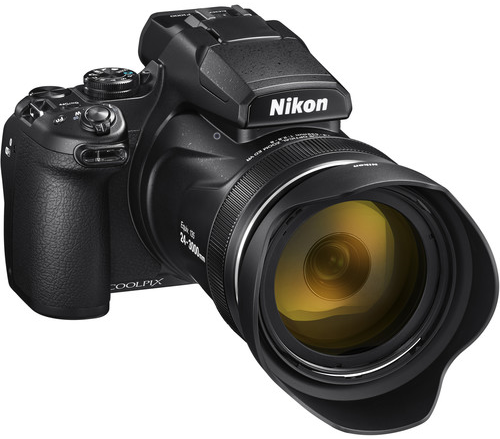
There are some other great options for the best affordable compact camera if you apply some different criteria. The Nikon Coolpix P100 and Sony Cyber-Shot RX-10 mk III are Super Zoom cameras with amazingly long telephoto reach.
Or something else at MPB might strike your fancy. An MFT system with interchangeable lenses could be the right choice for your shooting style.
Best Affordable Compact Camera Wrap Up
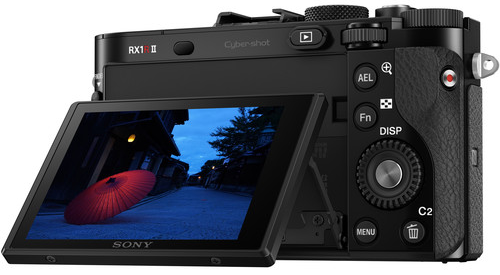
You have my list of what could be your choice as the best affordable compact camera. I have some particular criteria, but we all share the desire to take great photos and get camera gear without breaking our bank book.
Look at everything MPB has to offer and shop confidently because of their accurate condition descriptions, 6-month warranty, and the ability to save even more money by selling or trading in your own camera gear.

